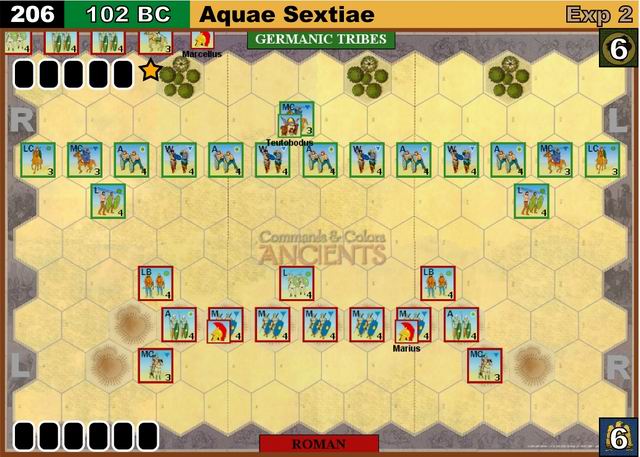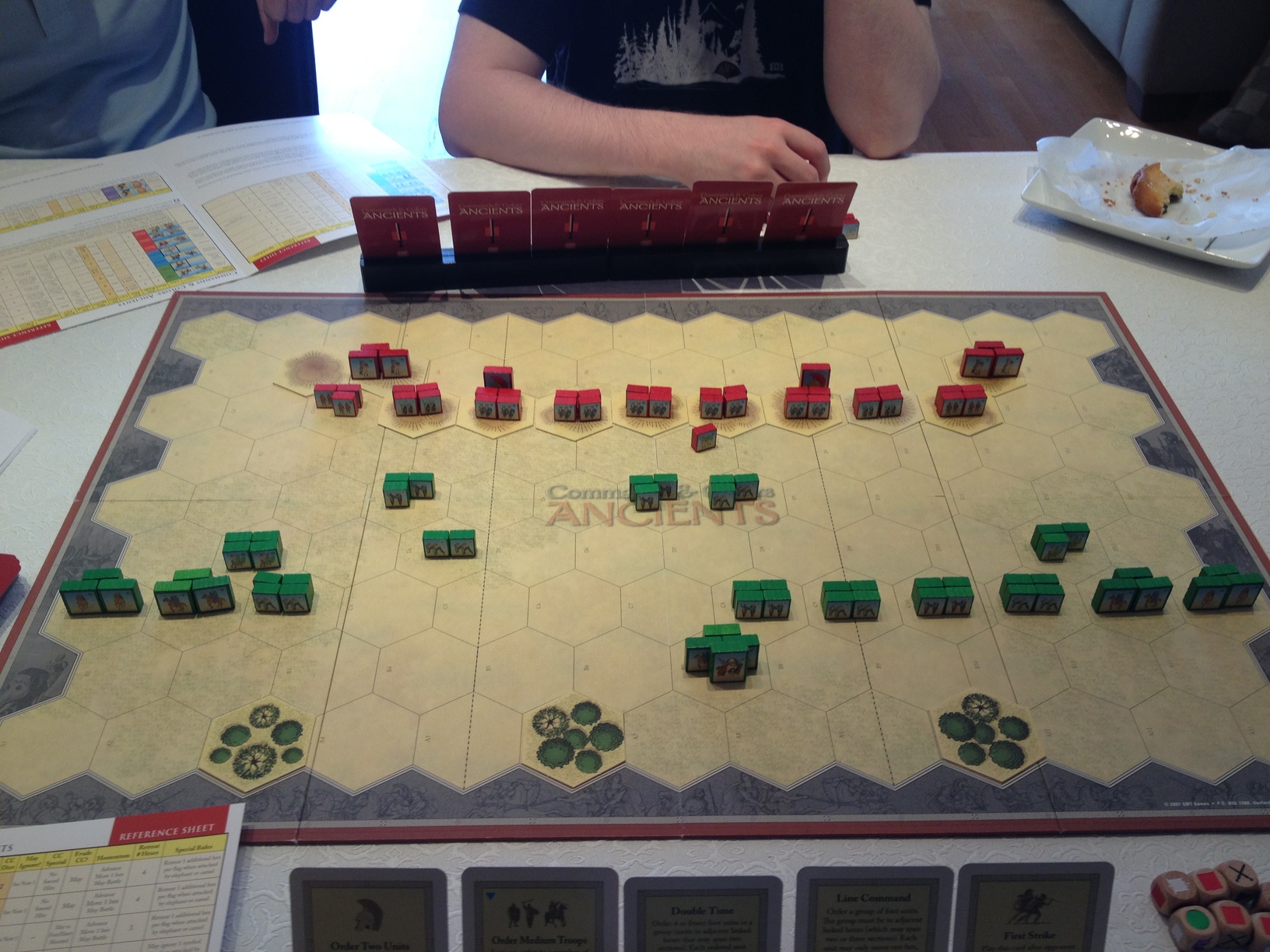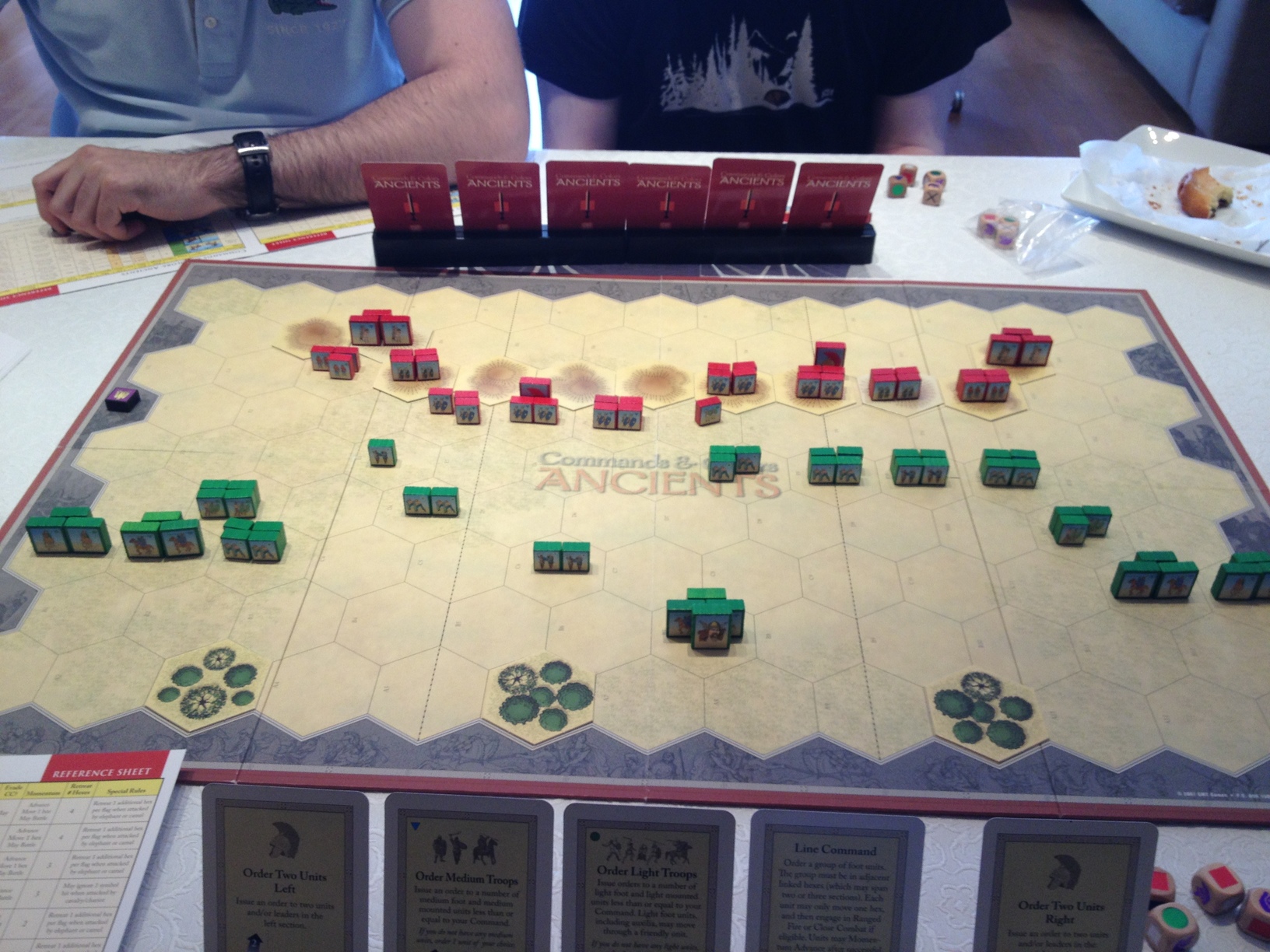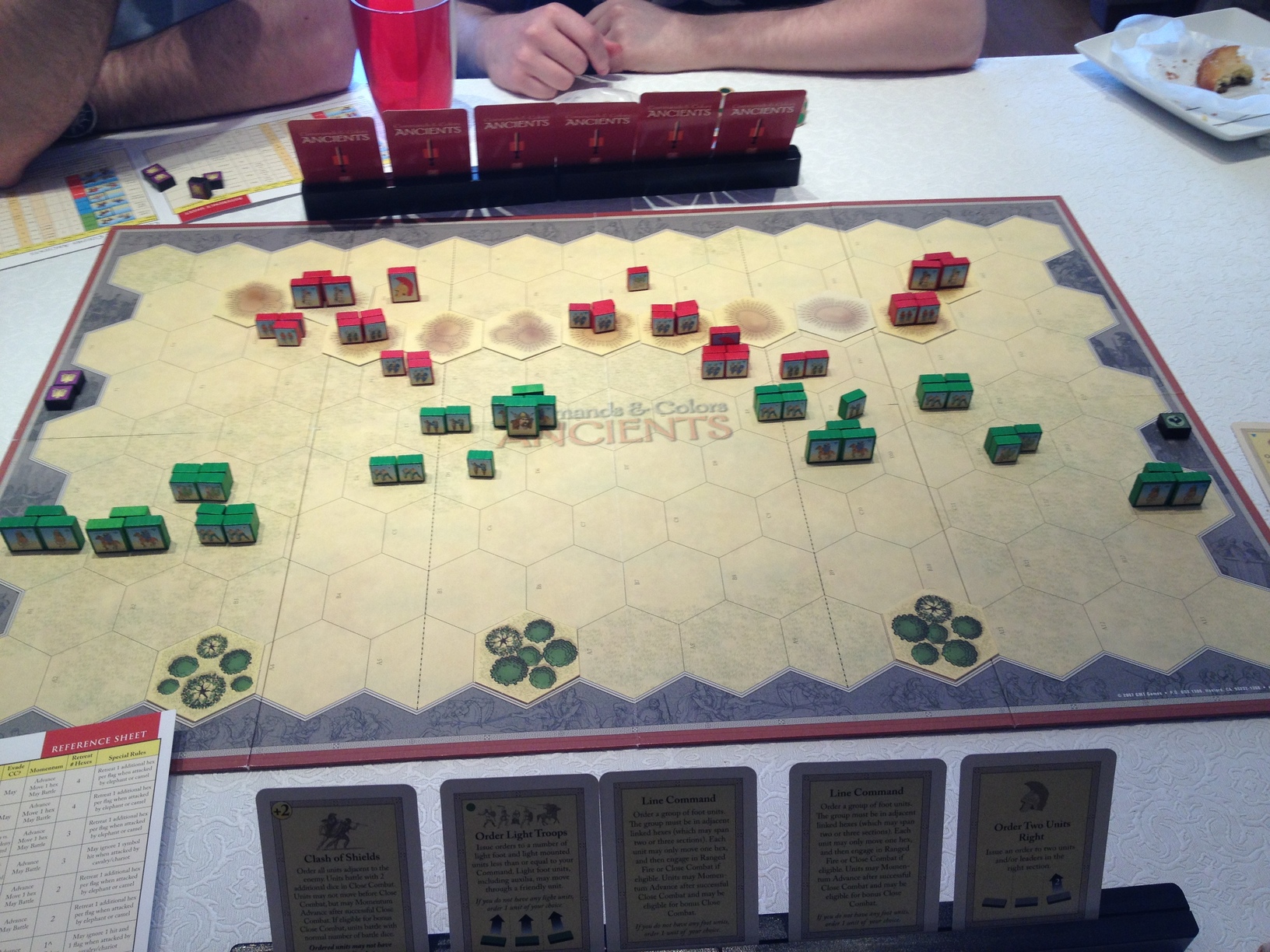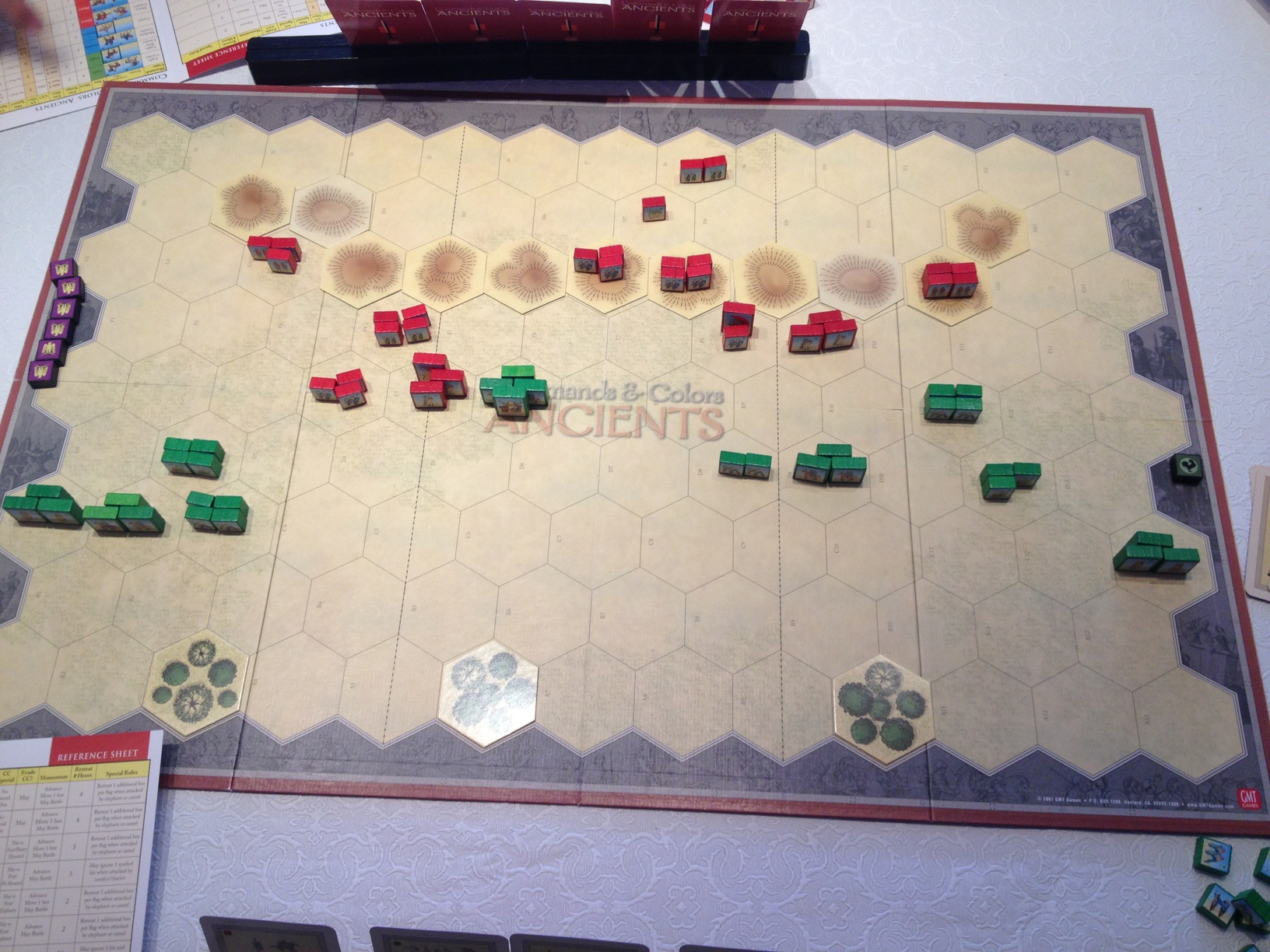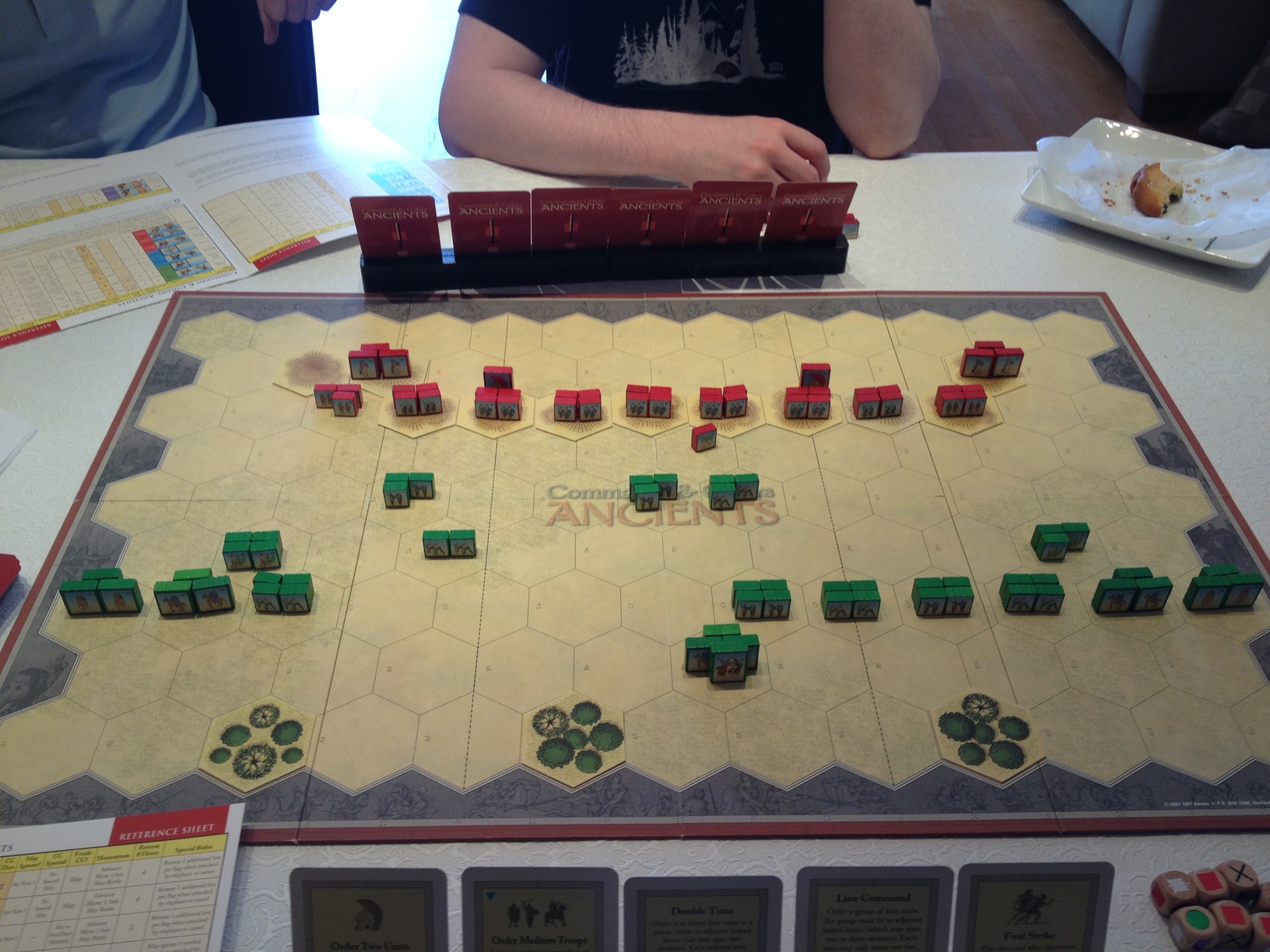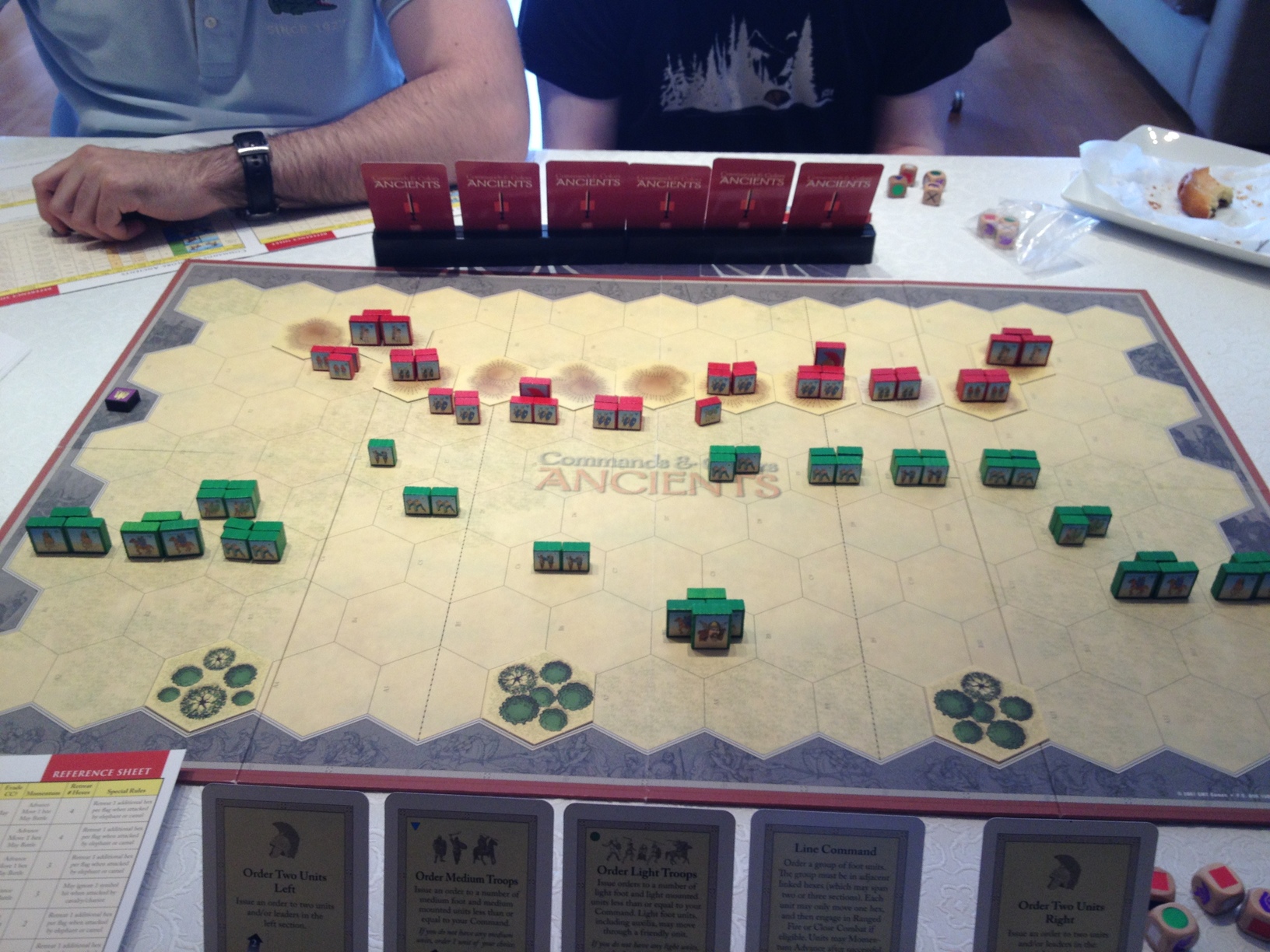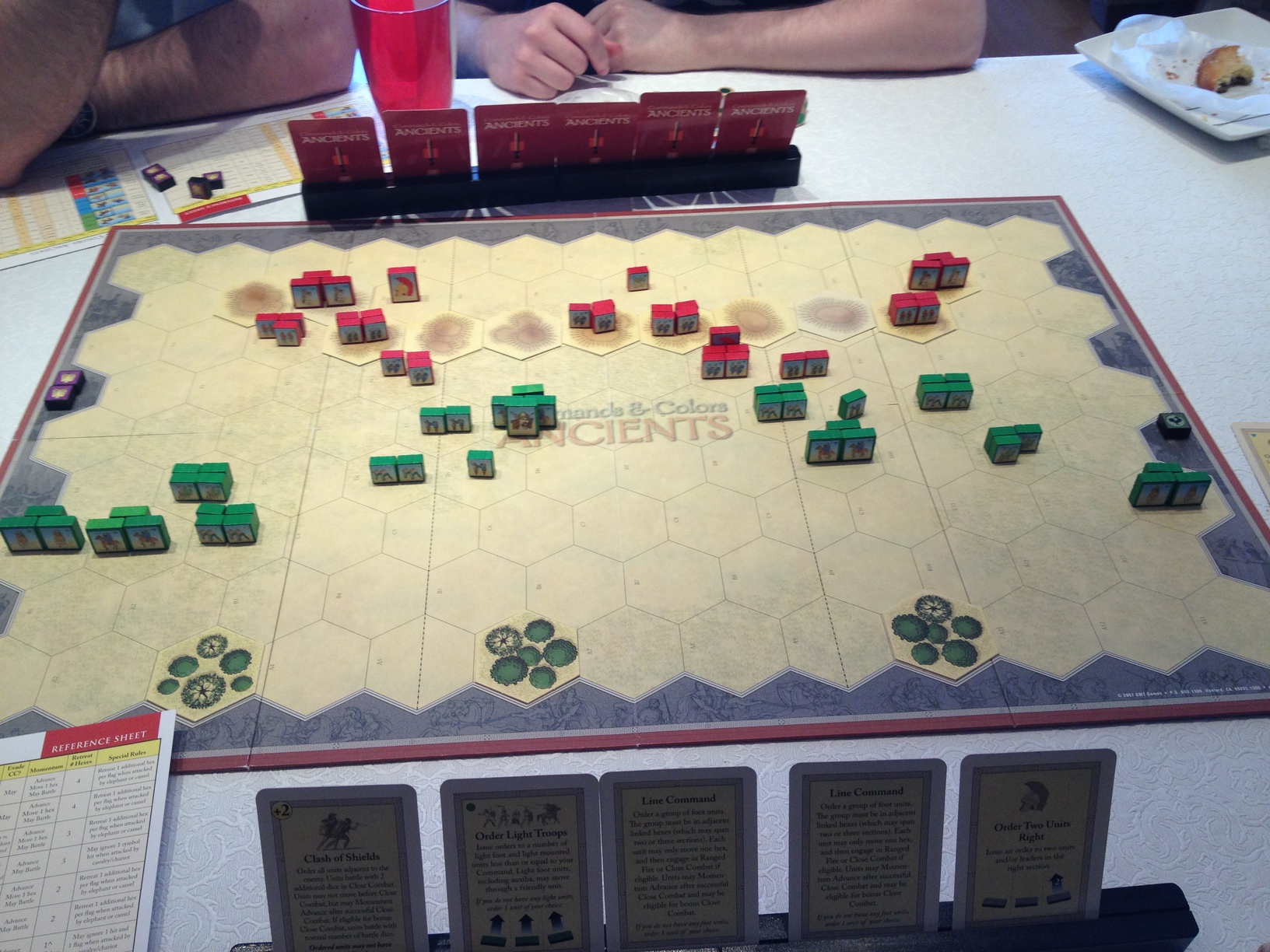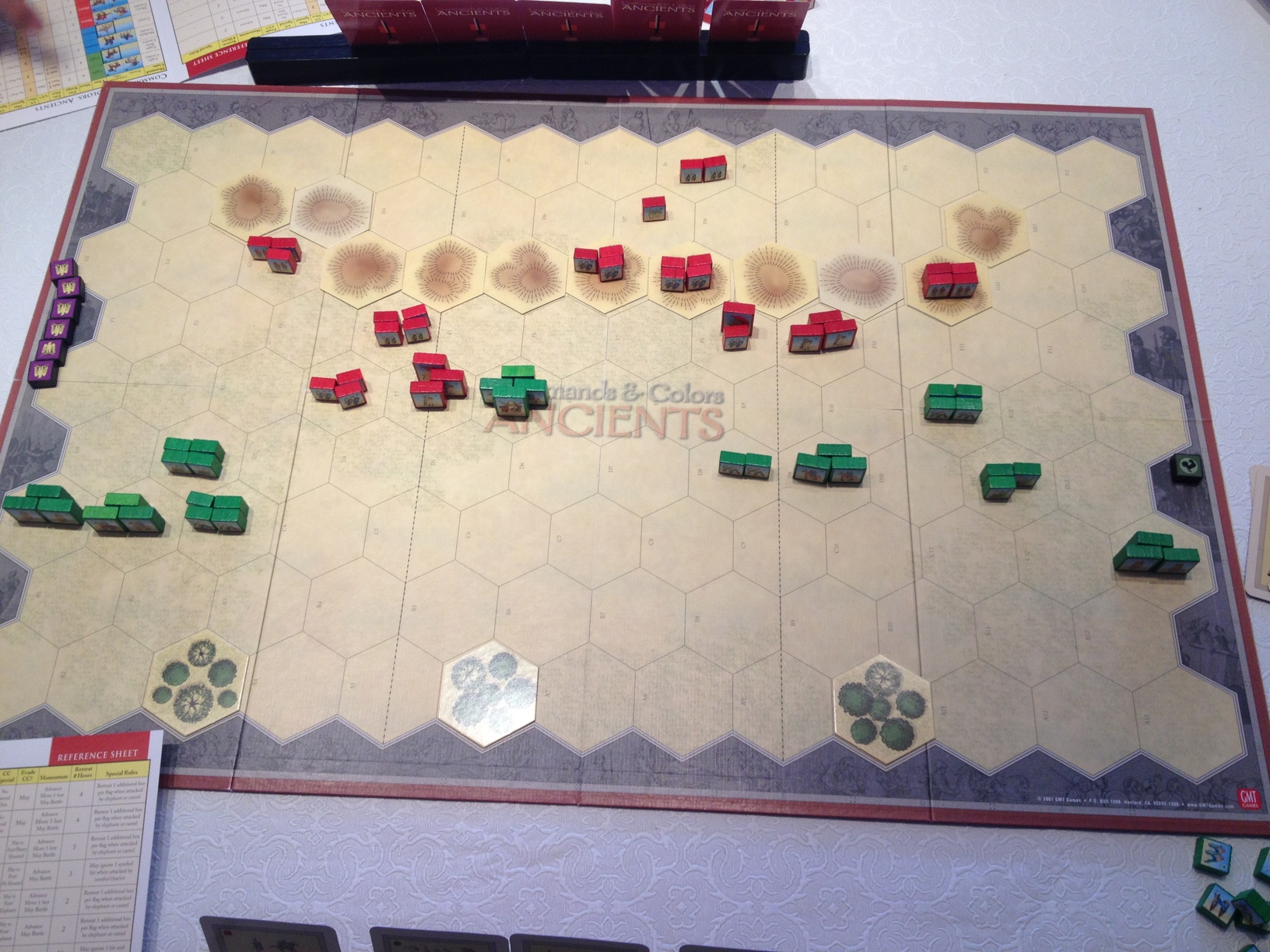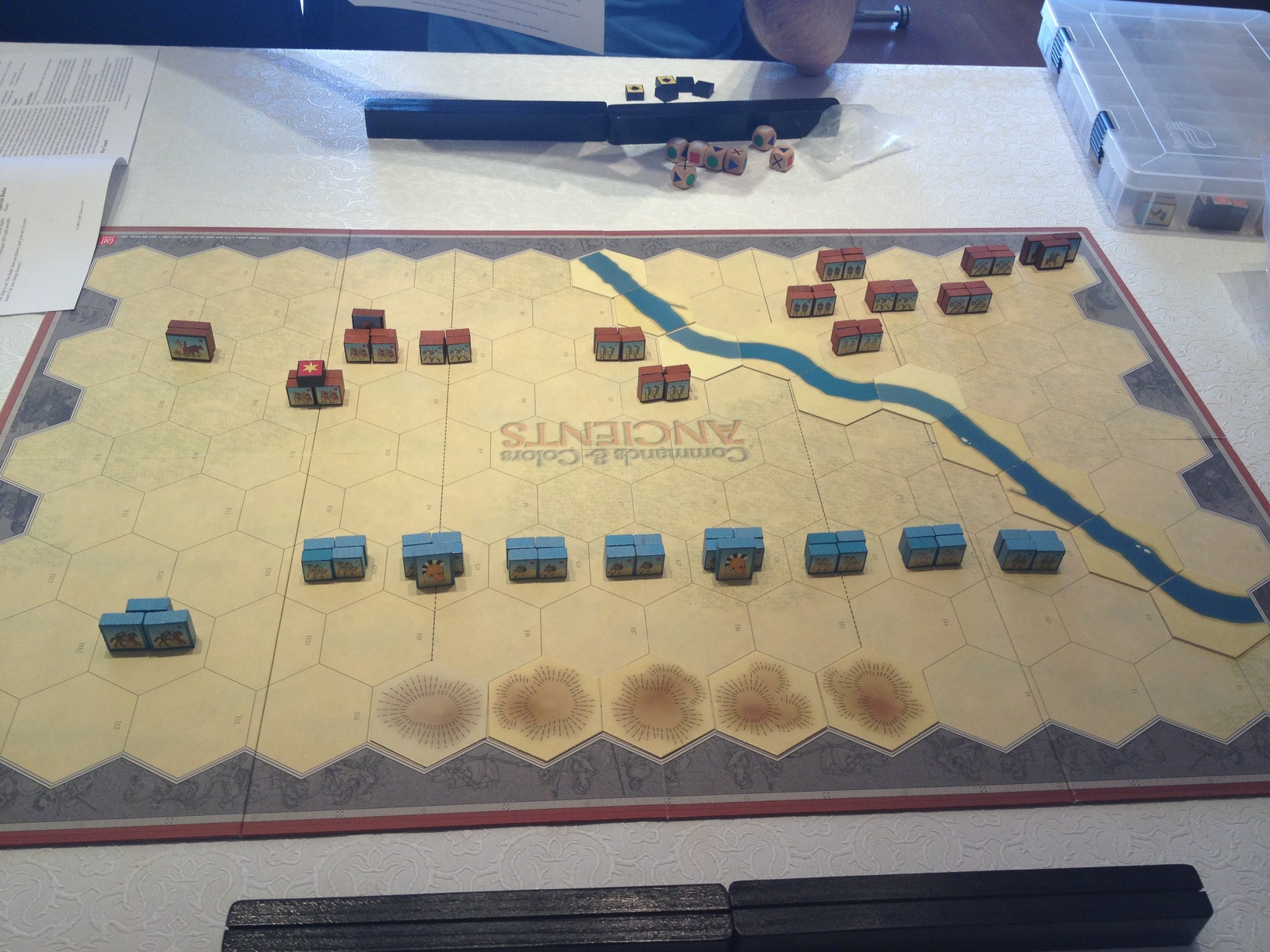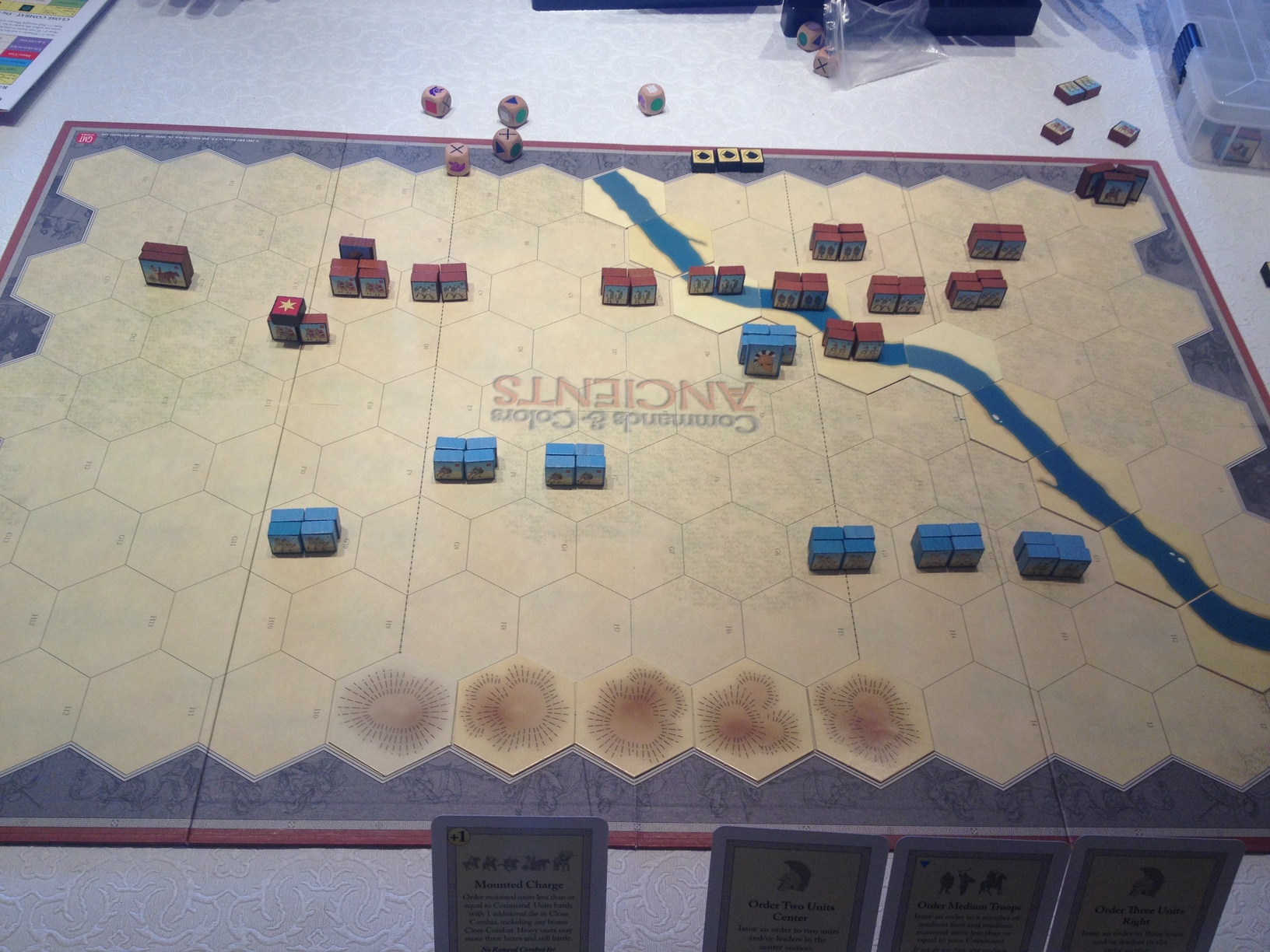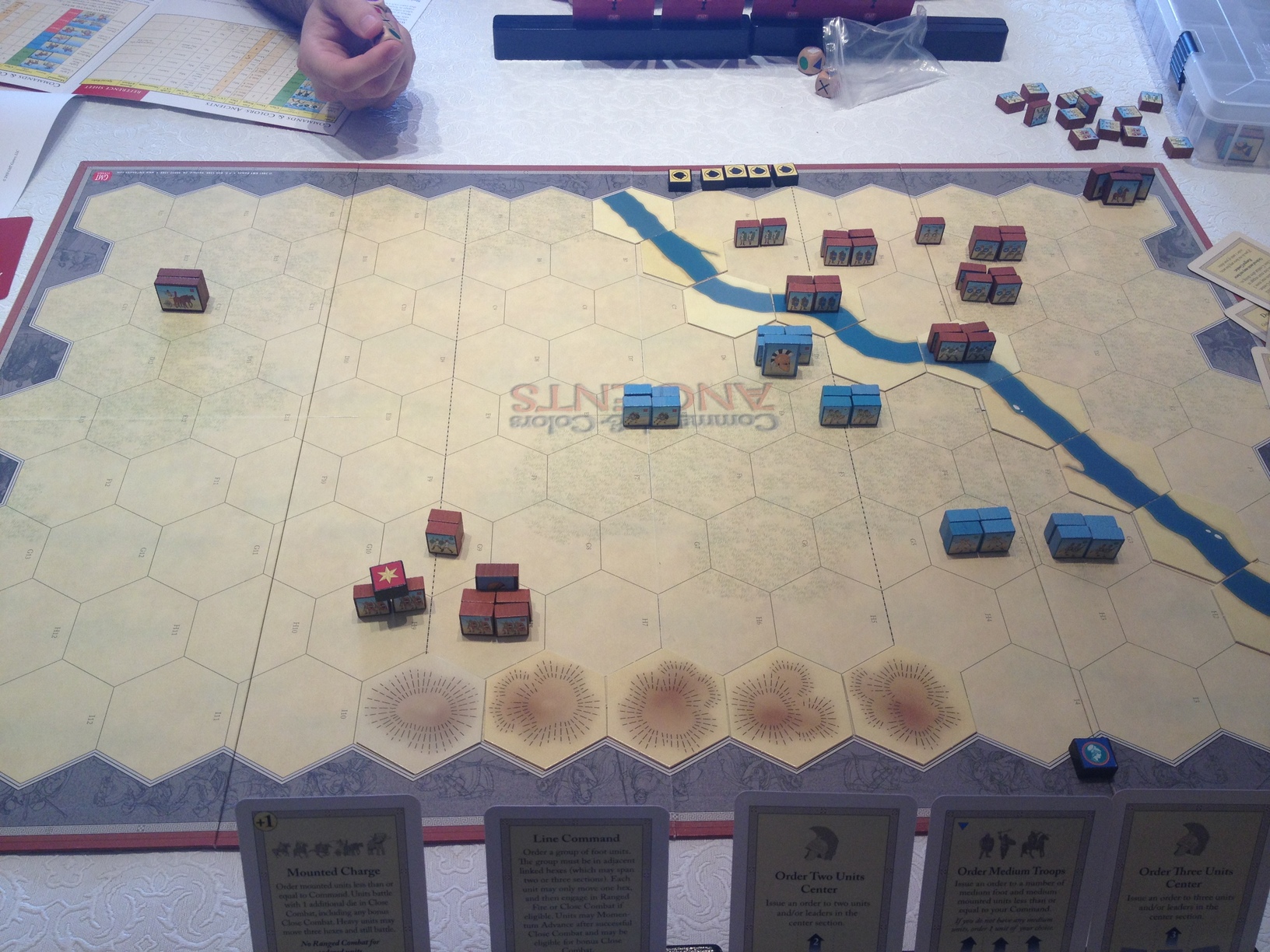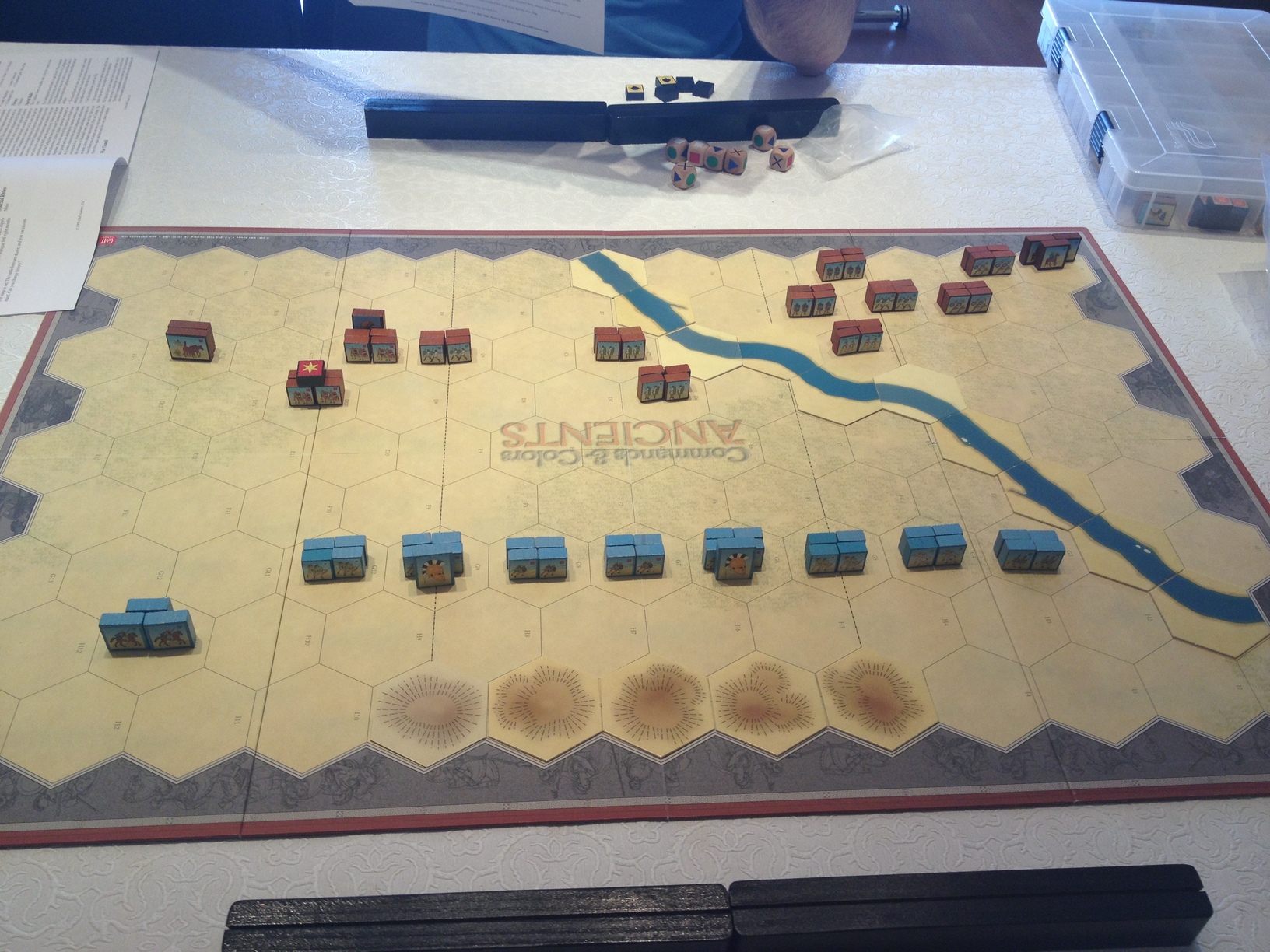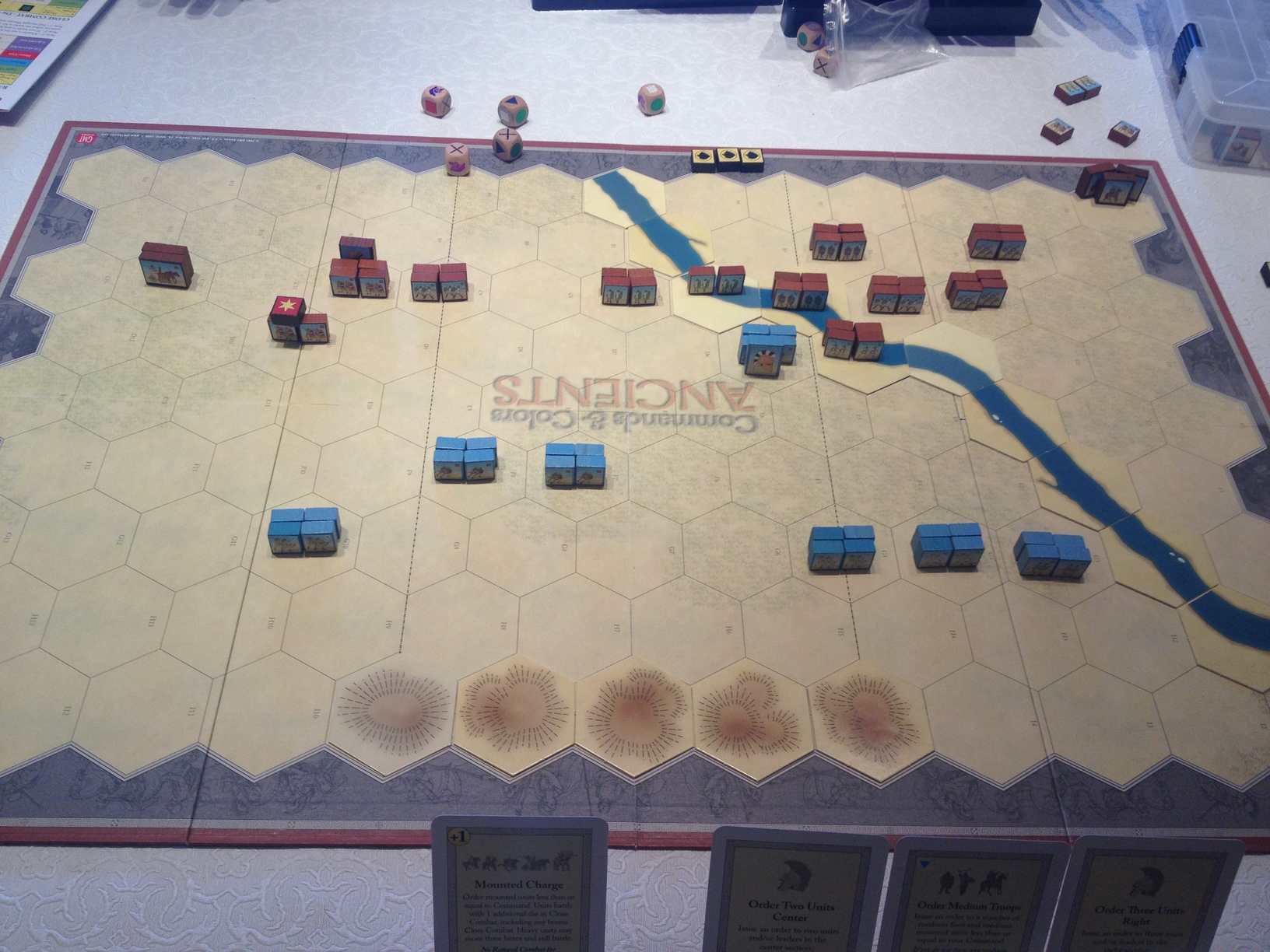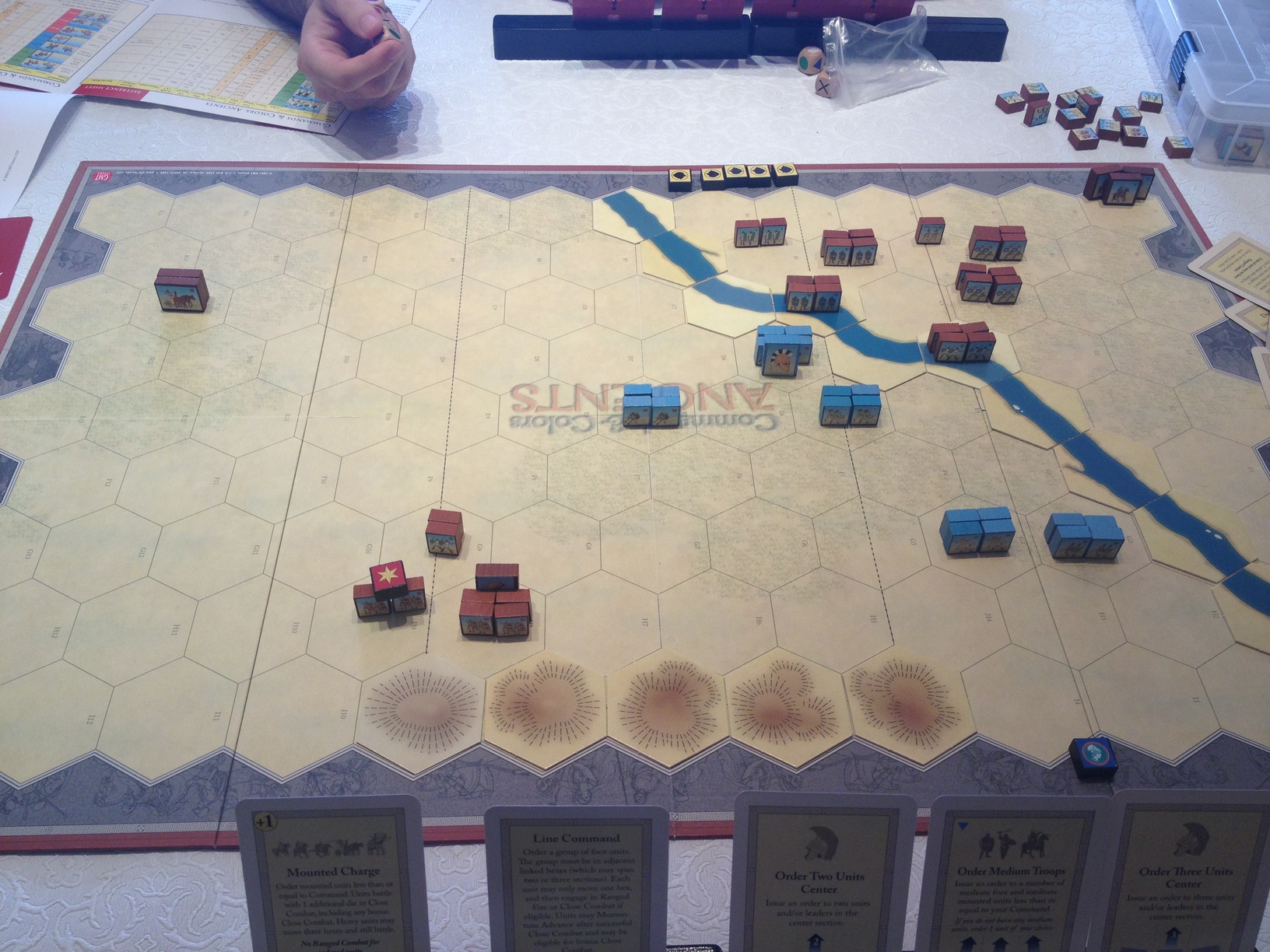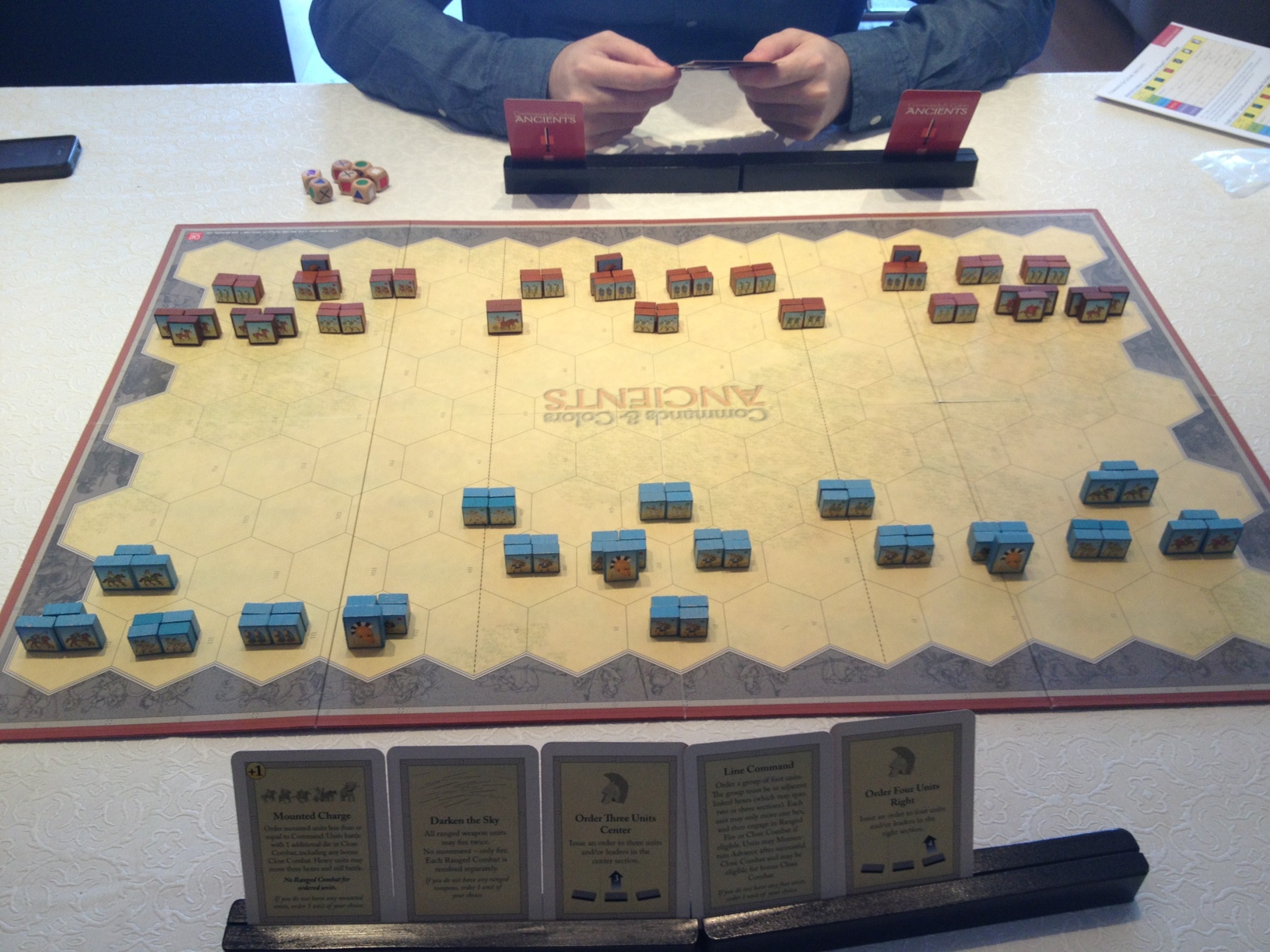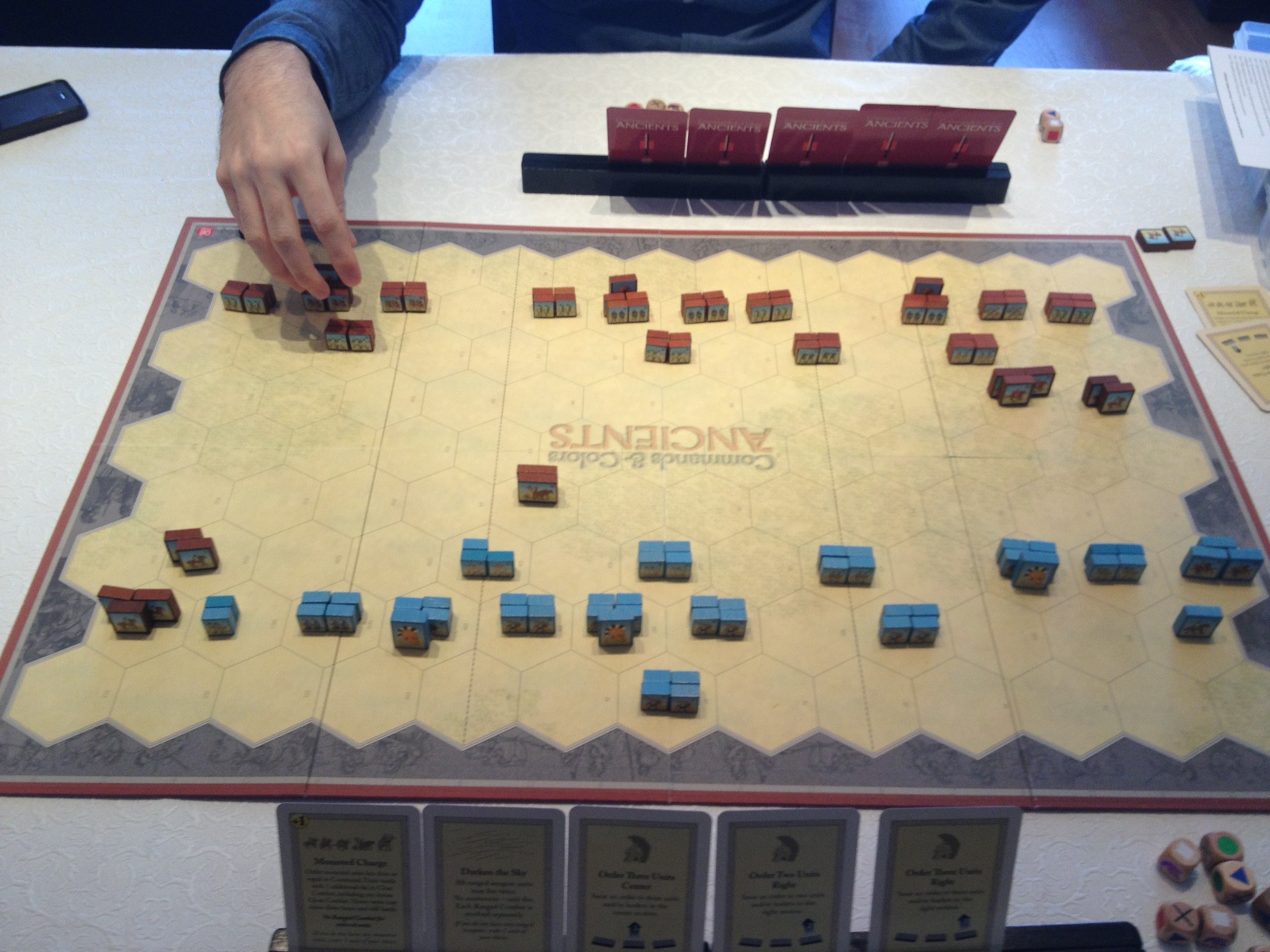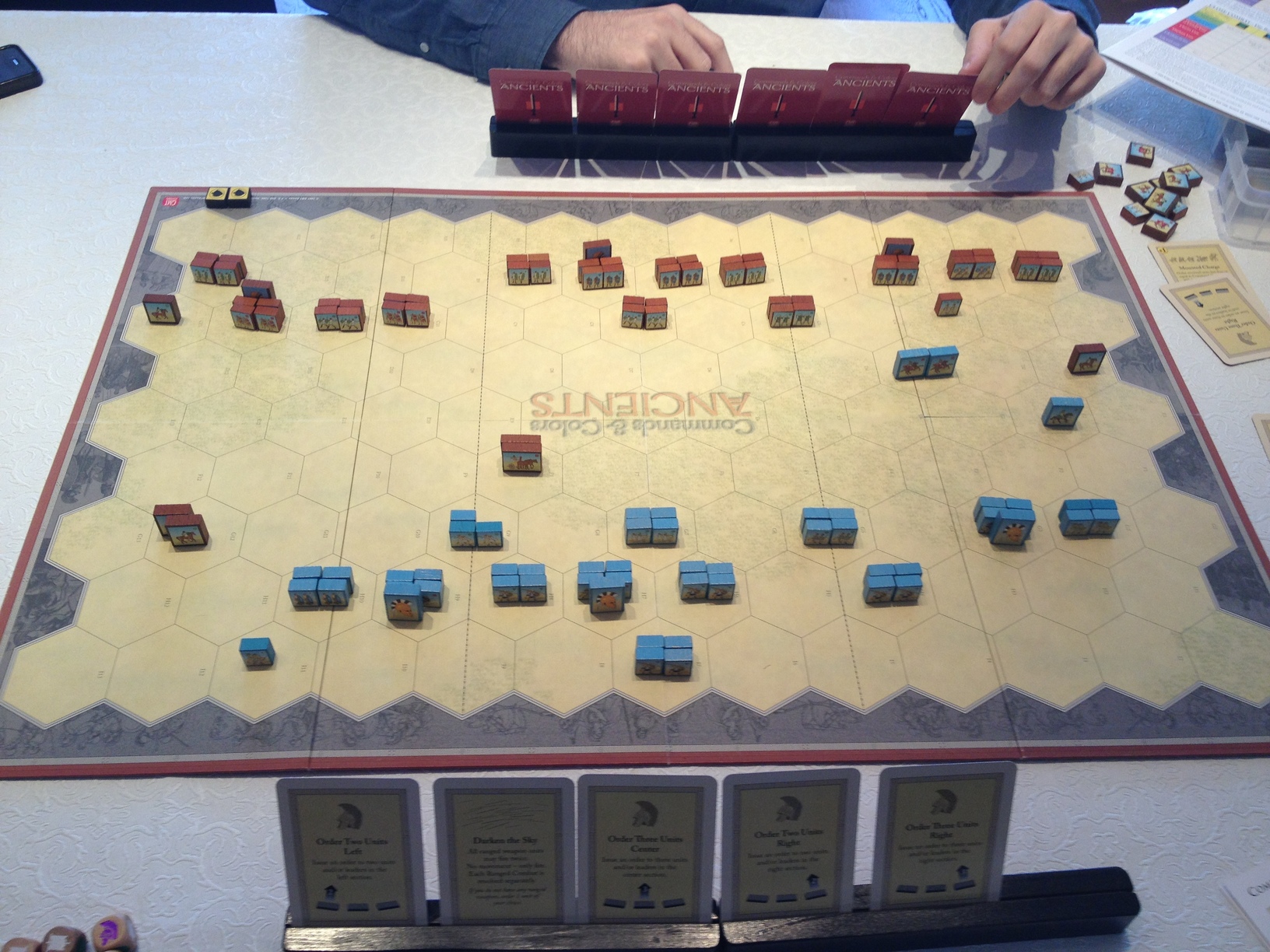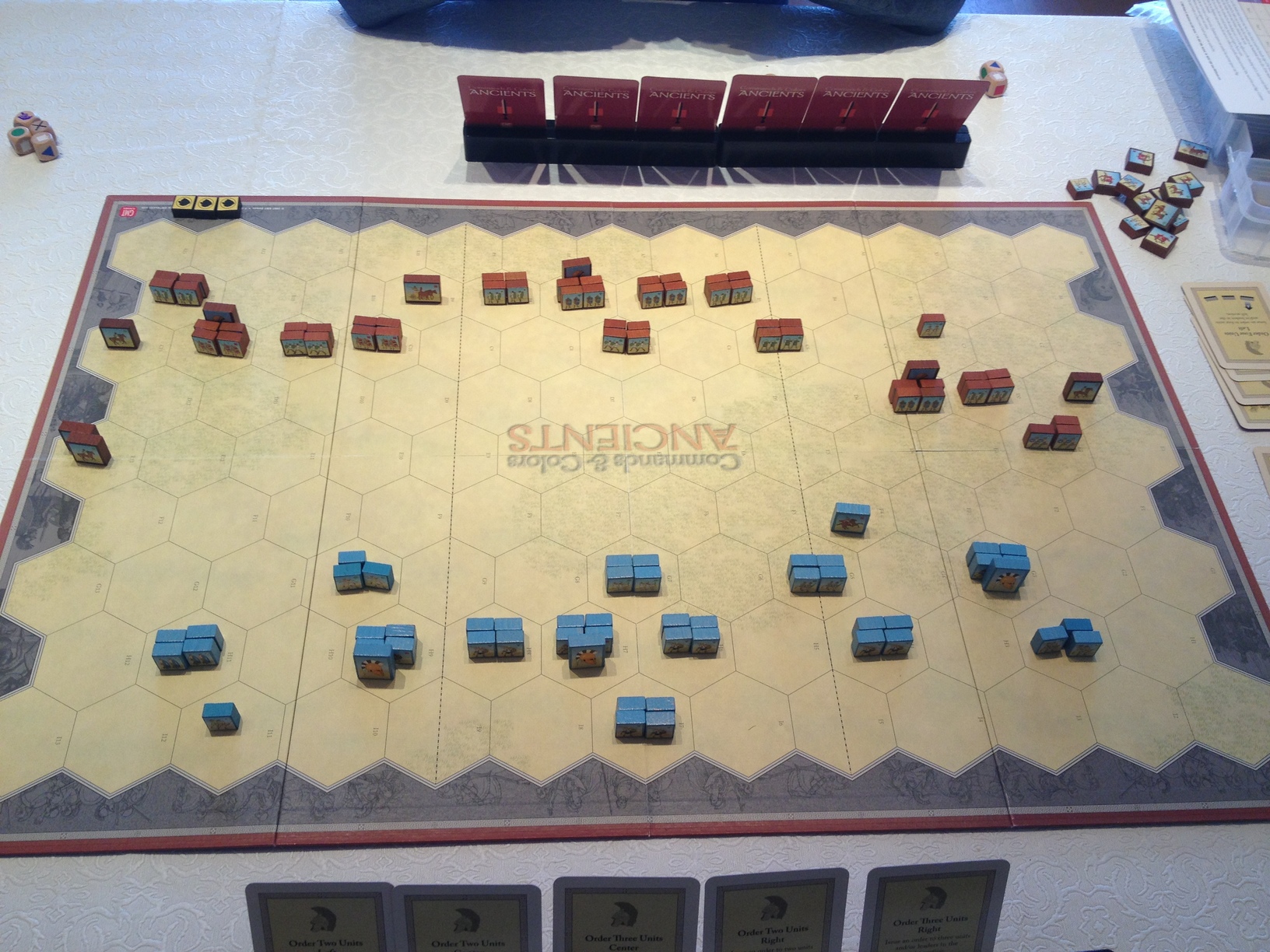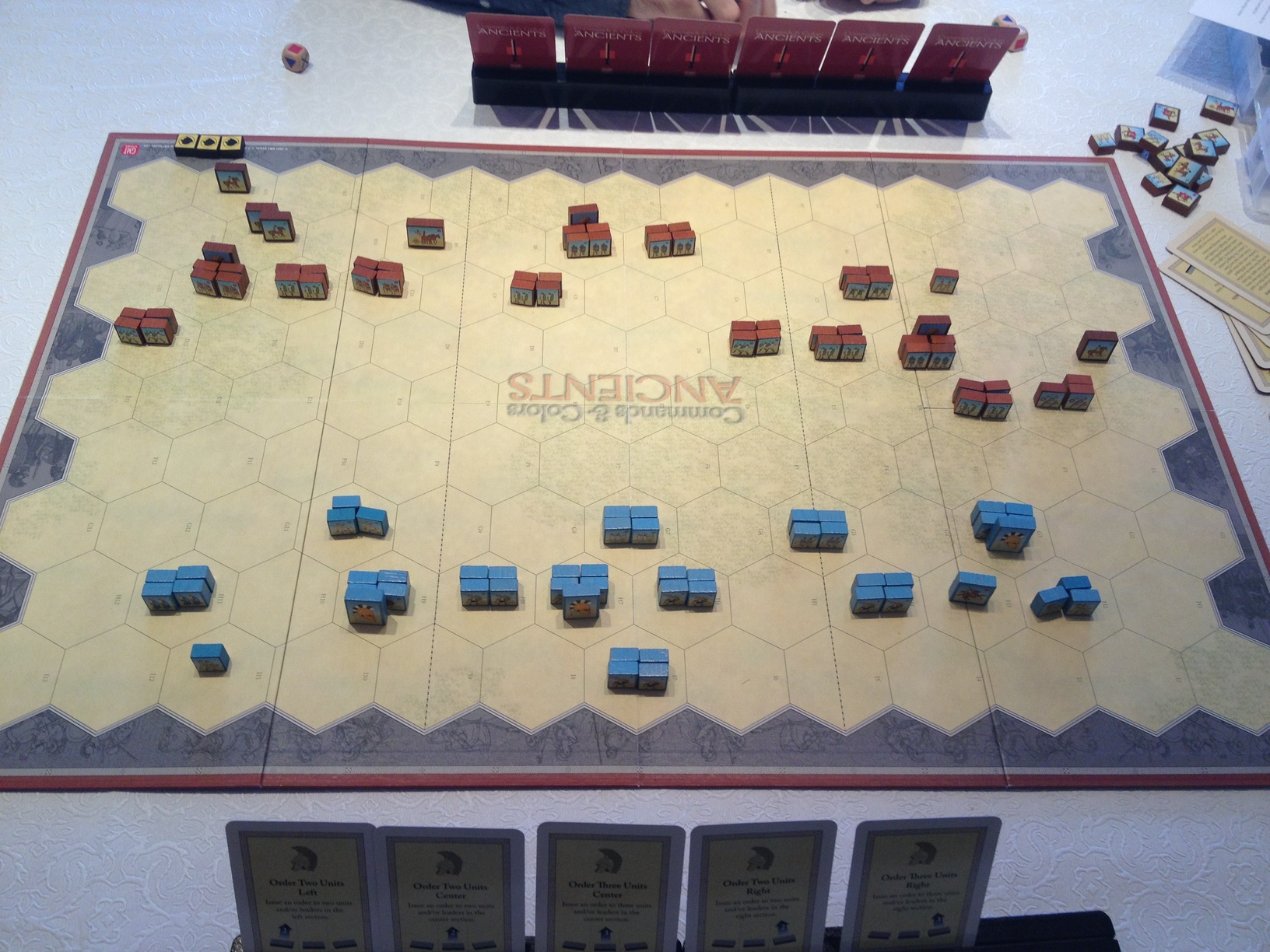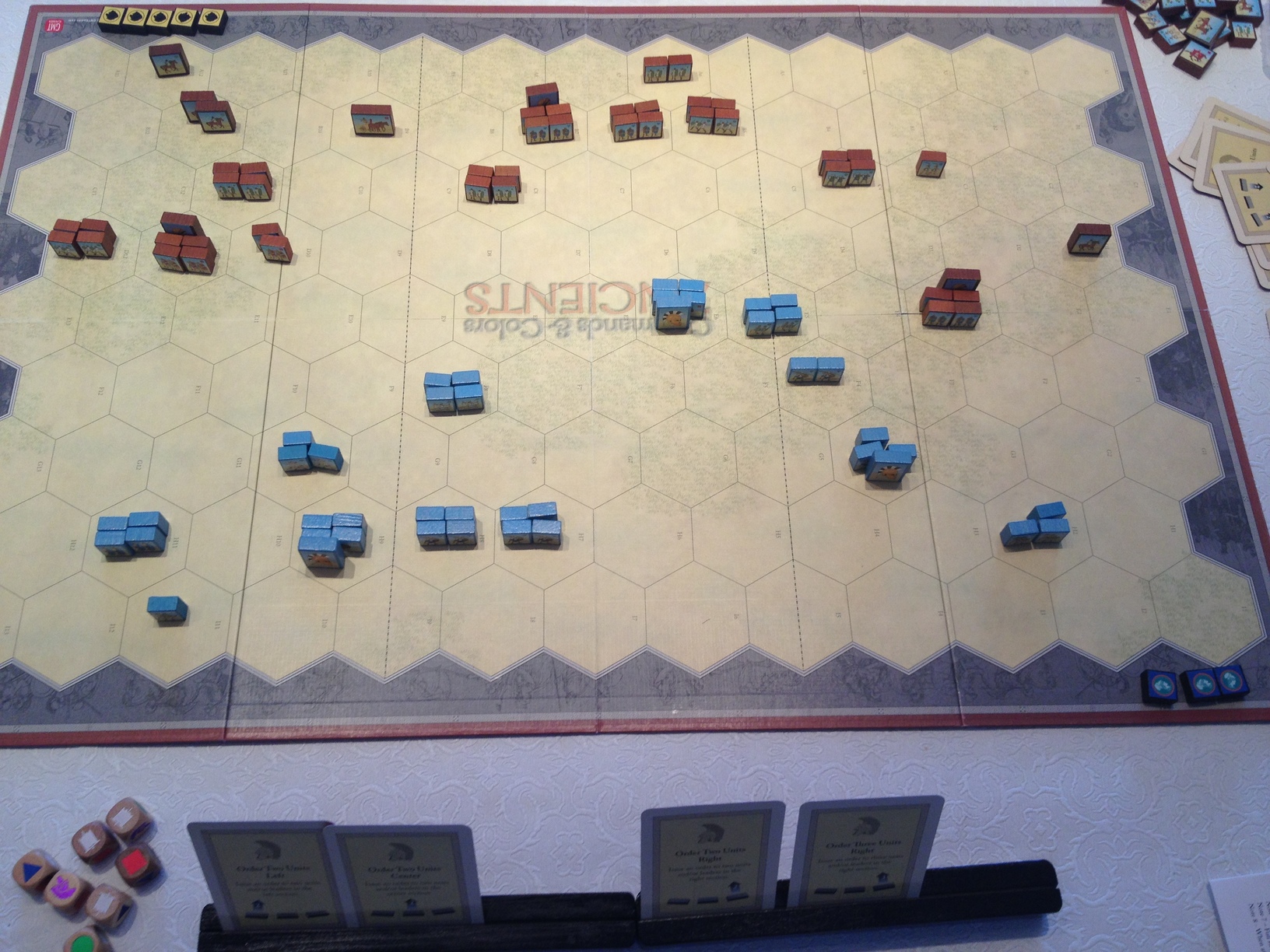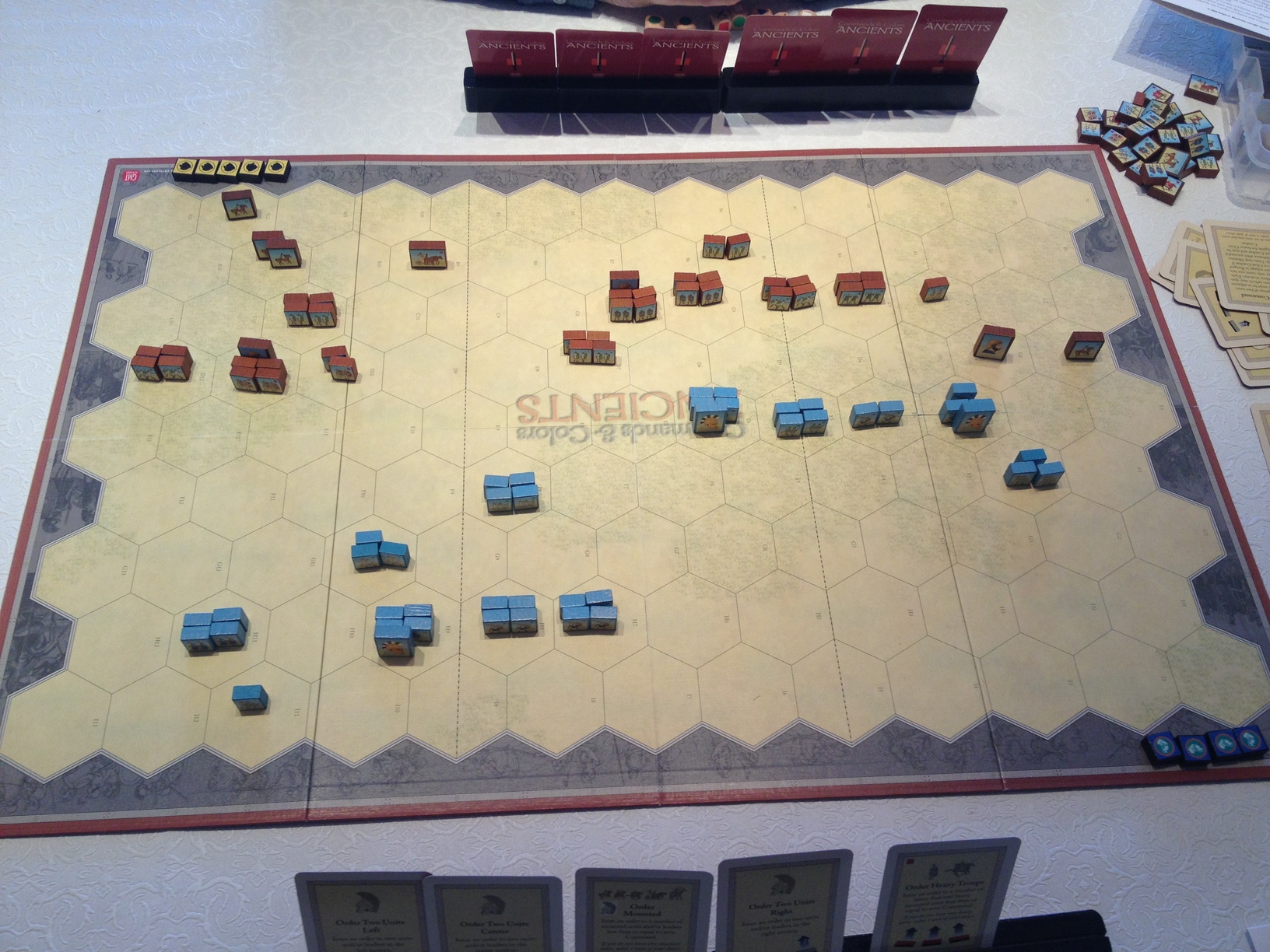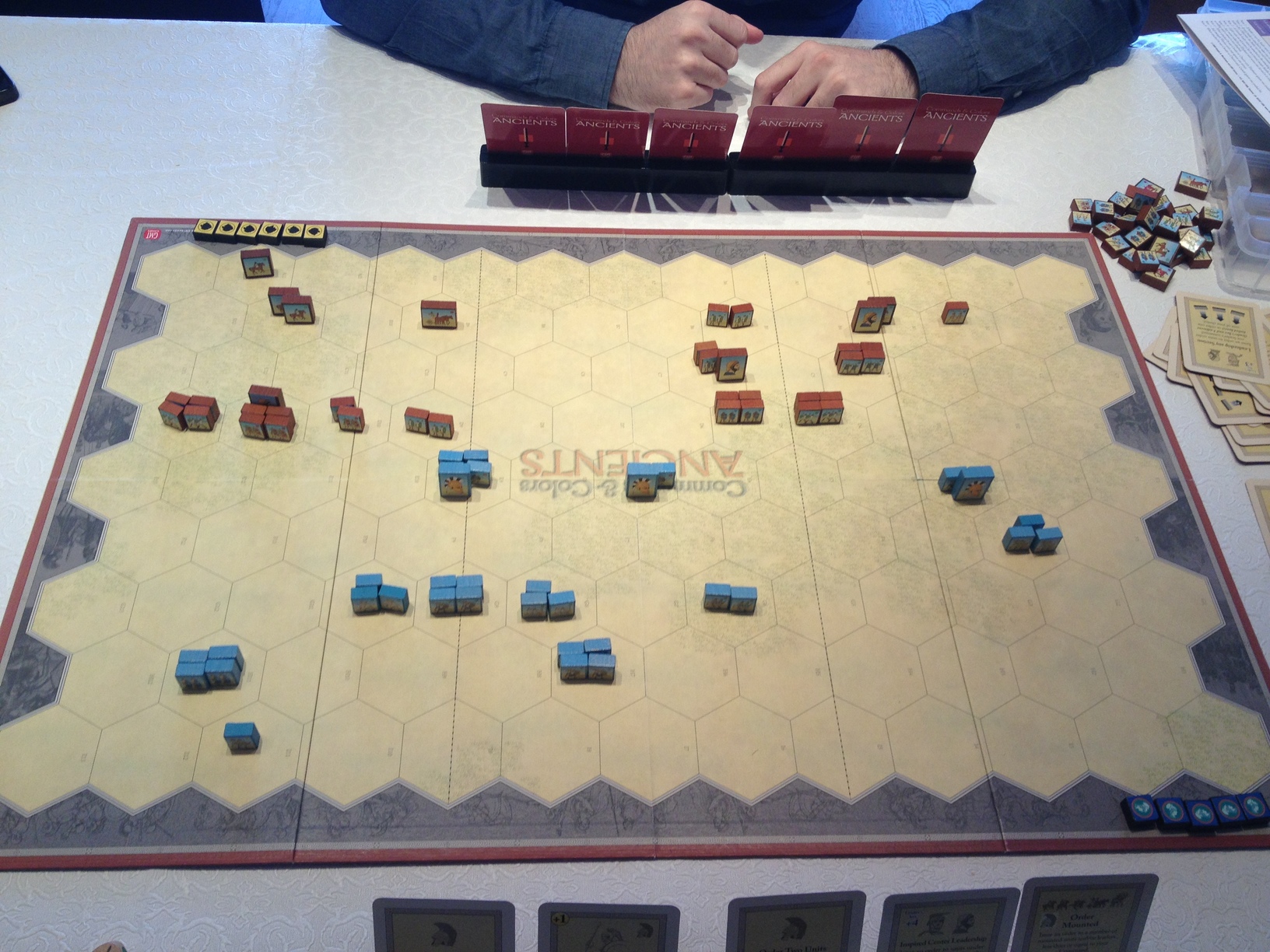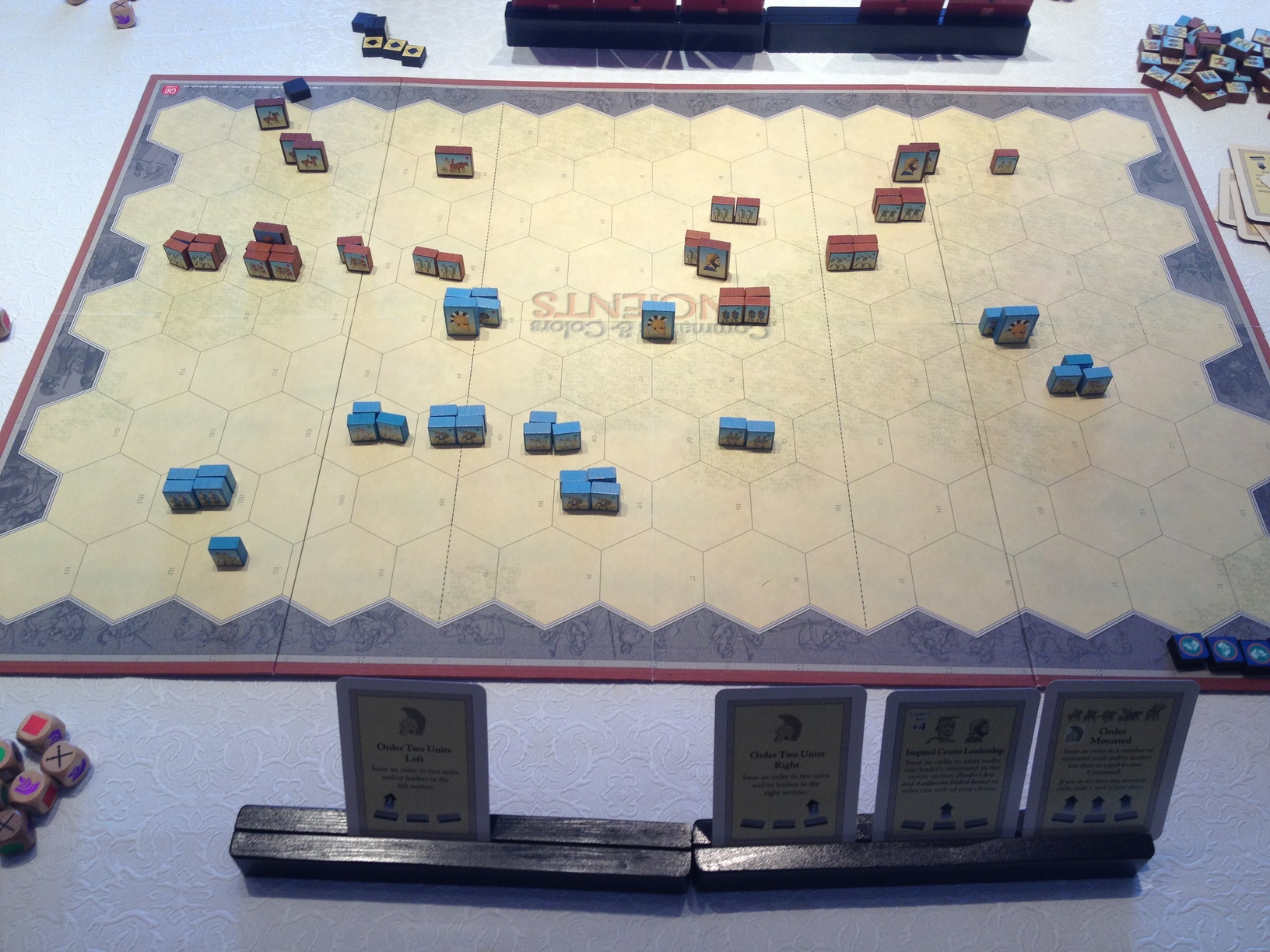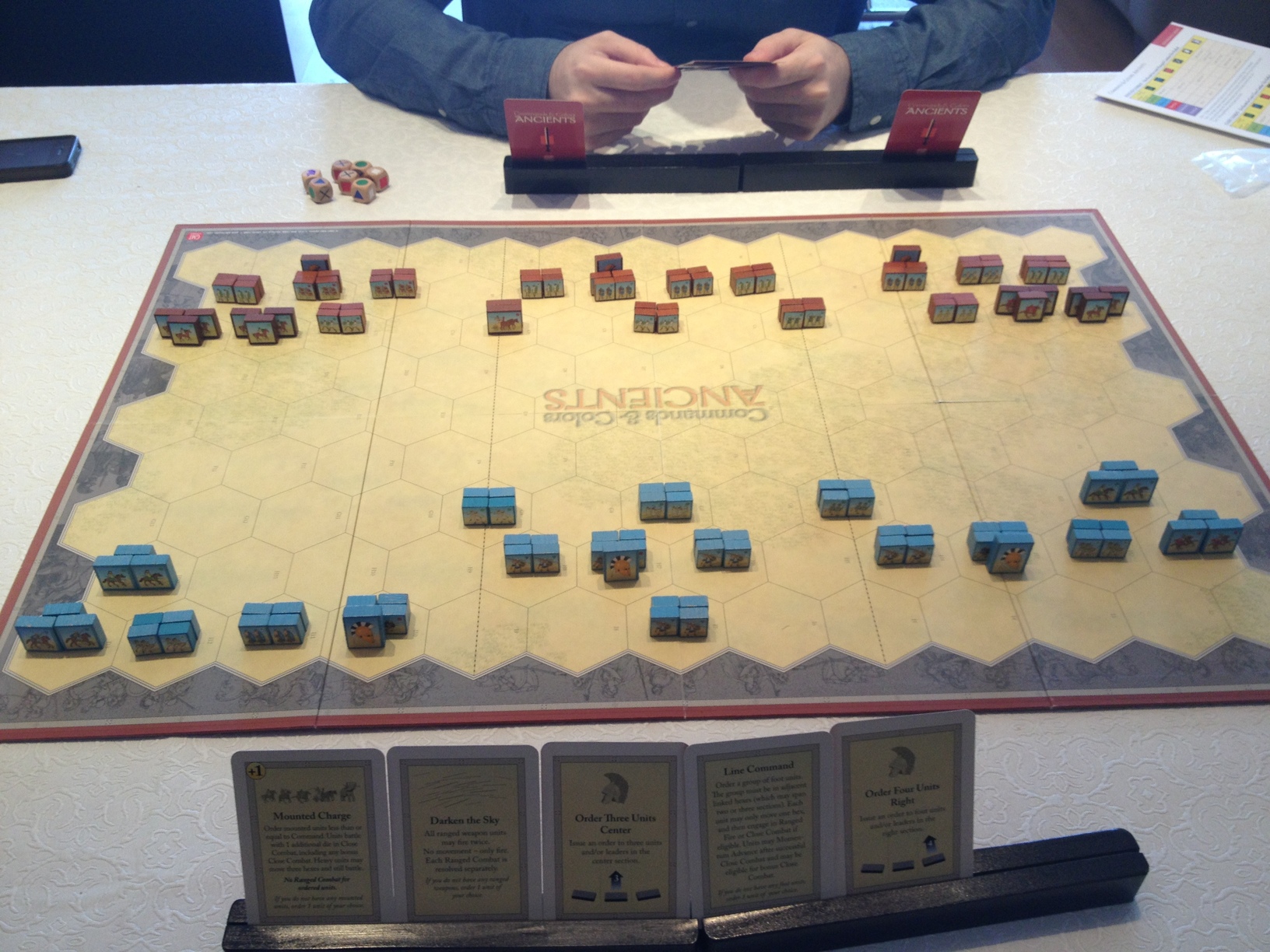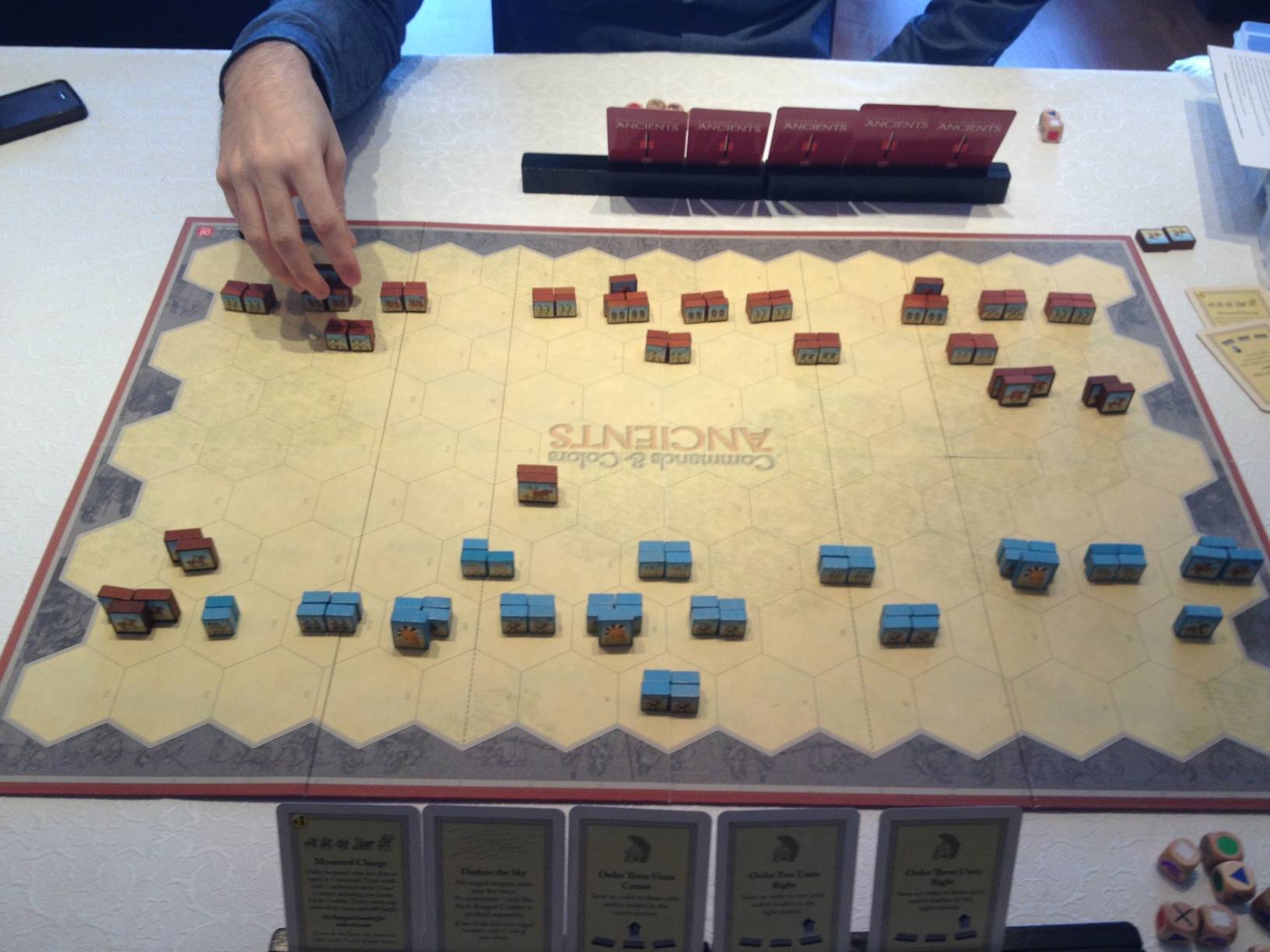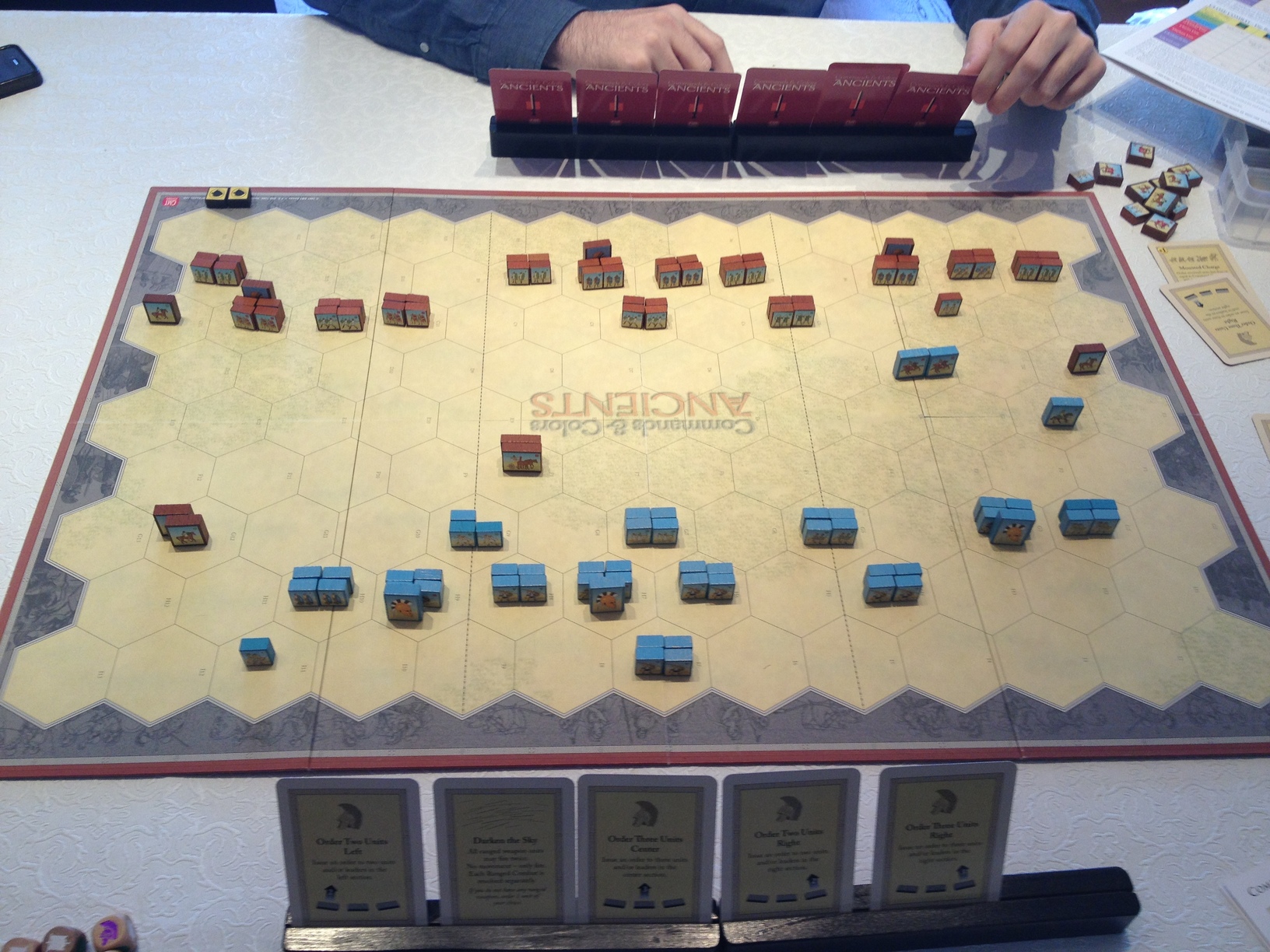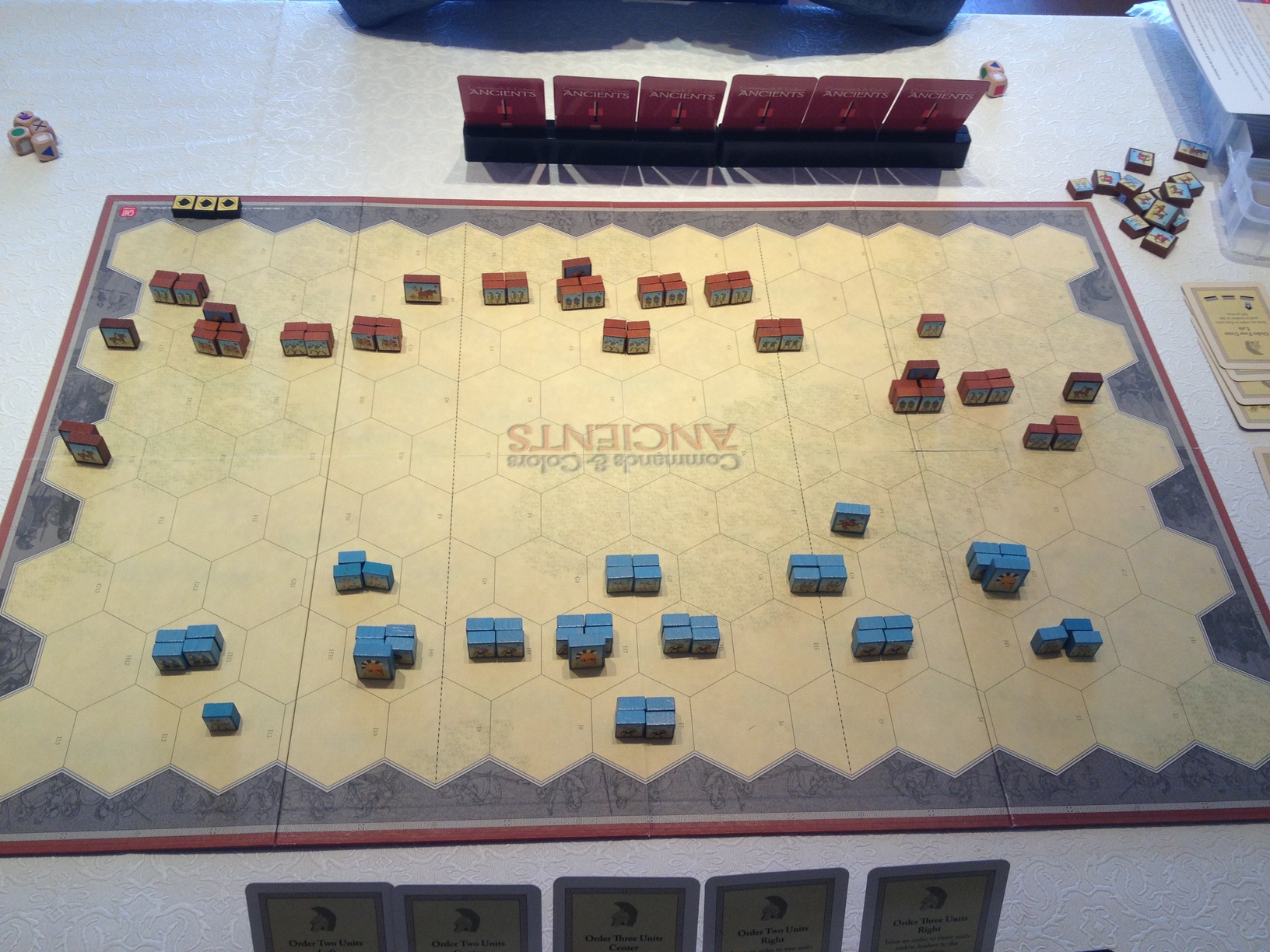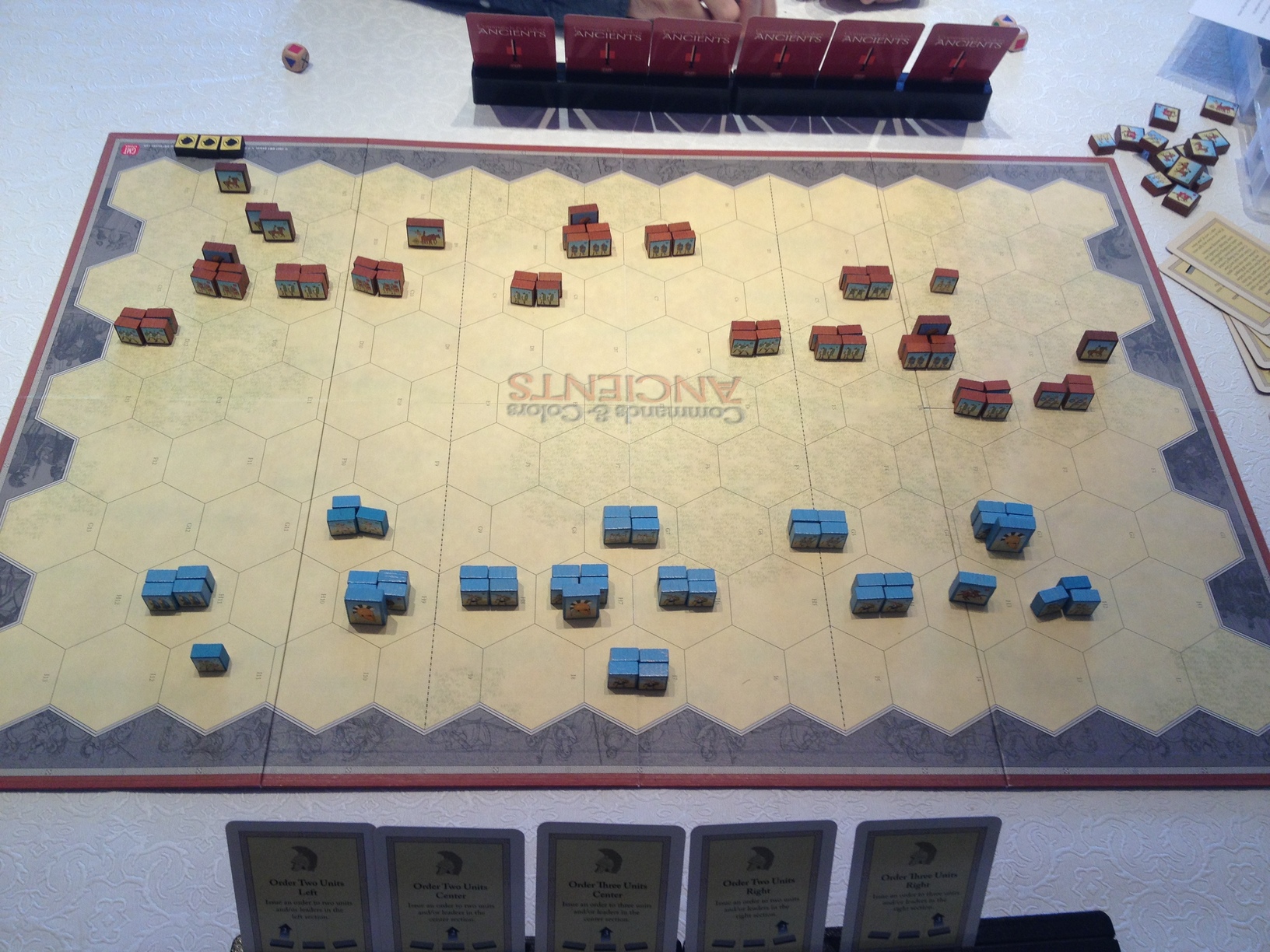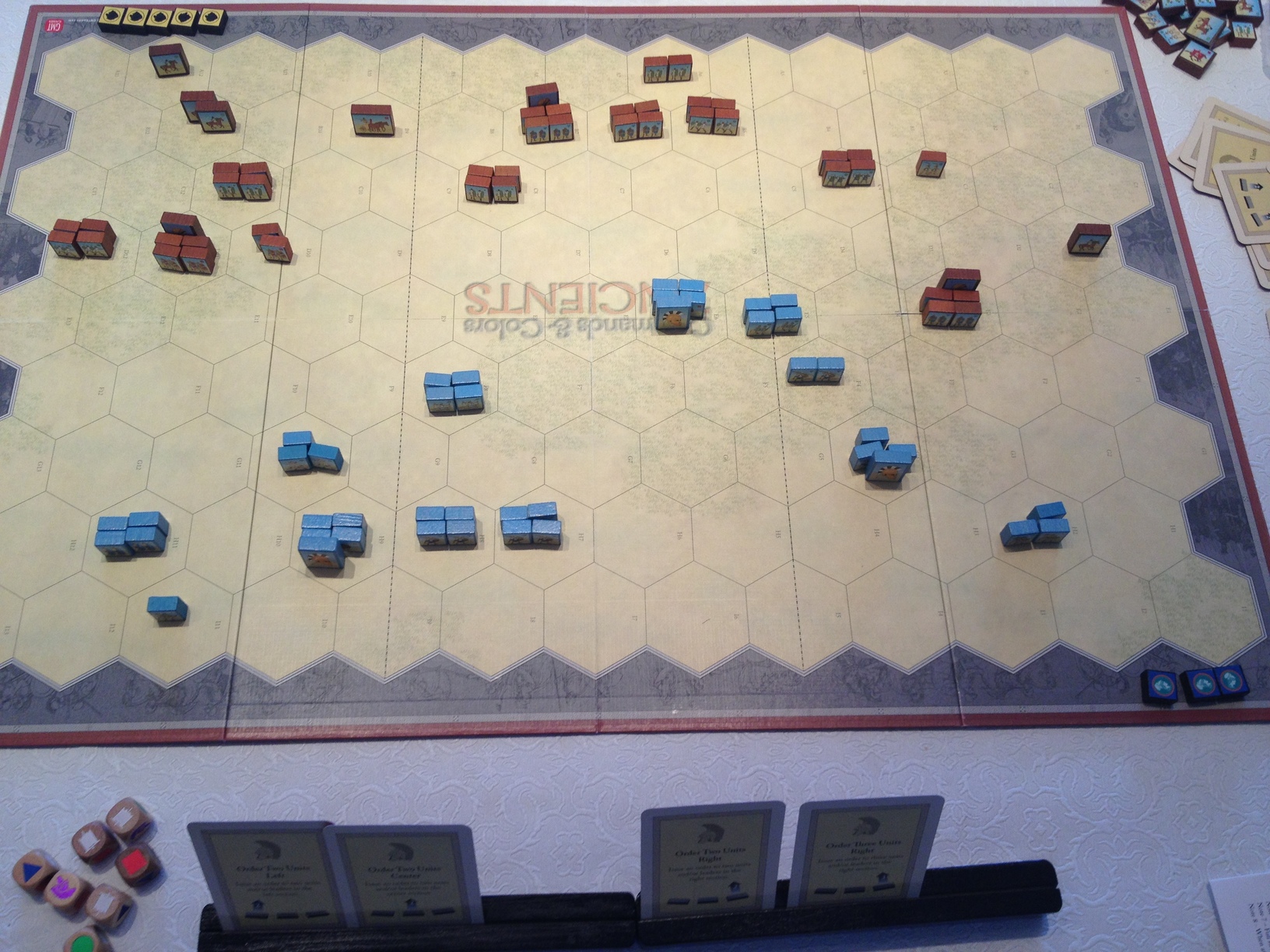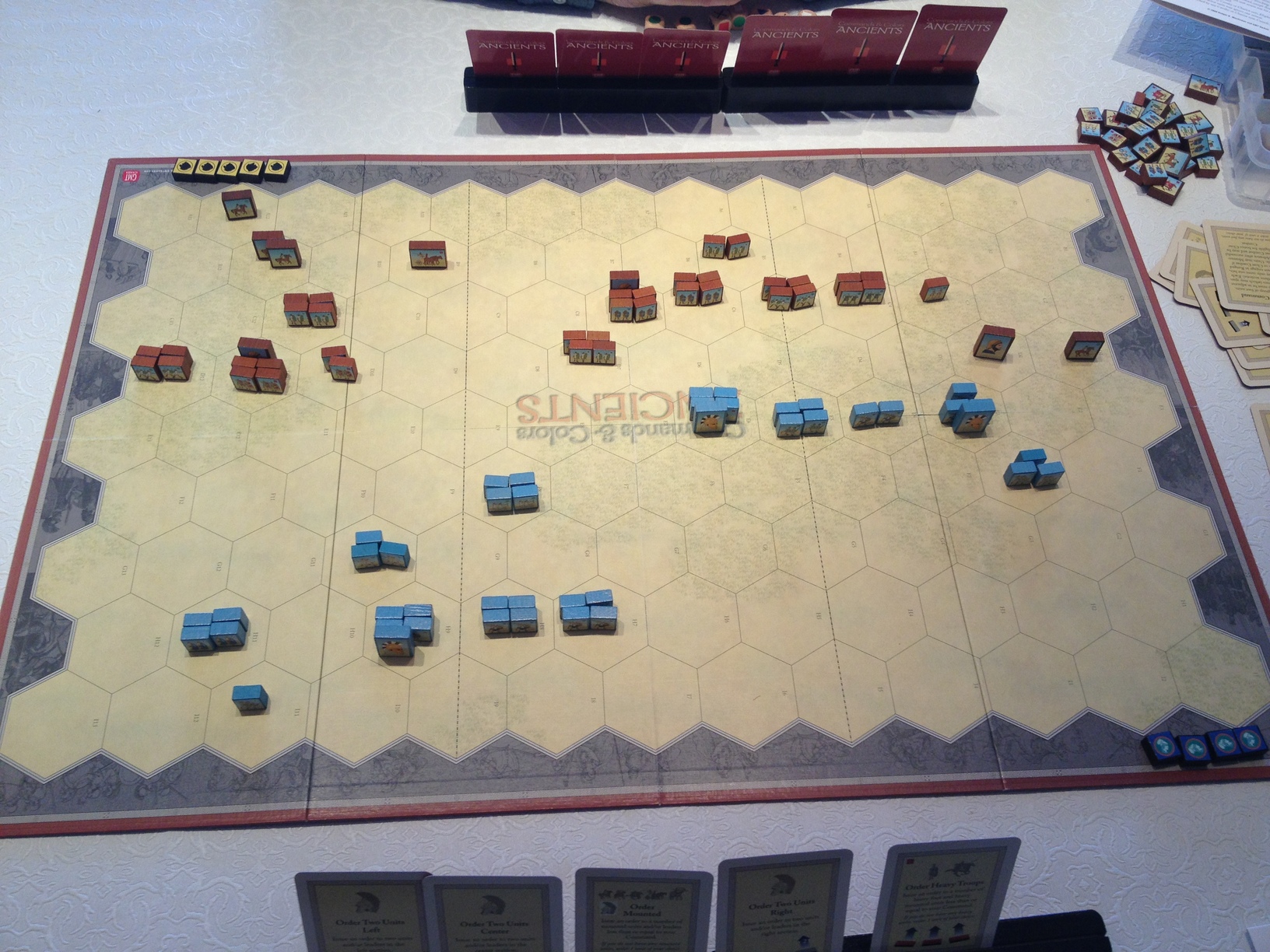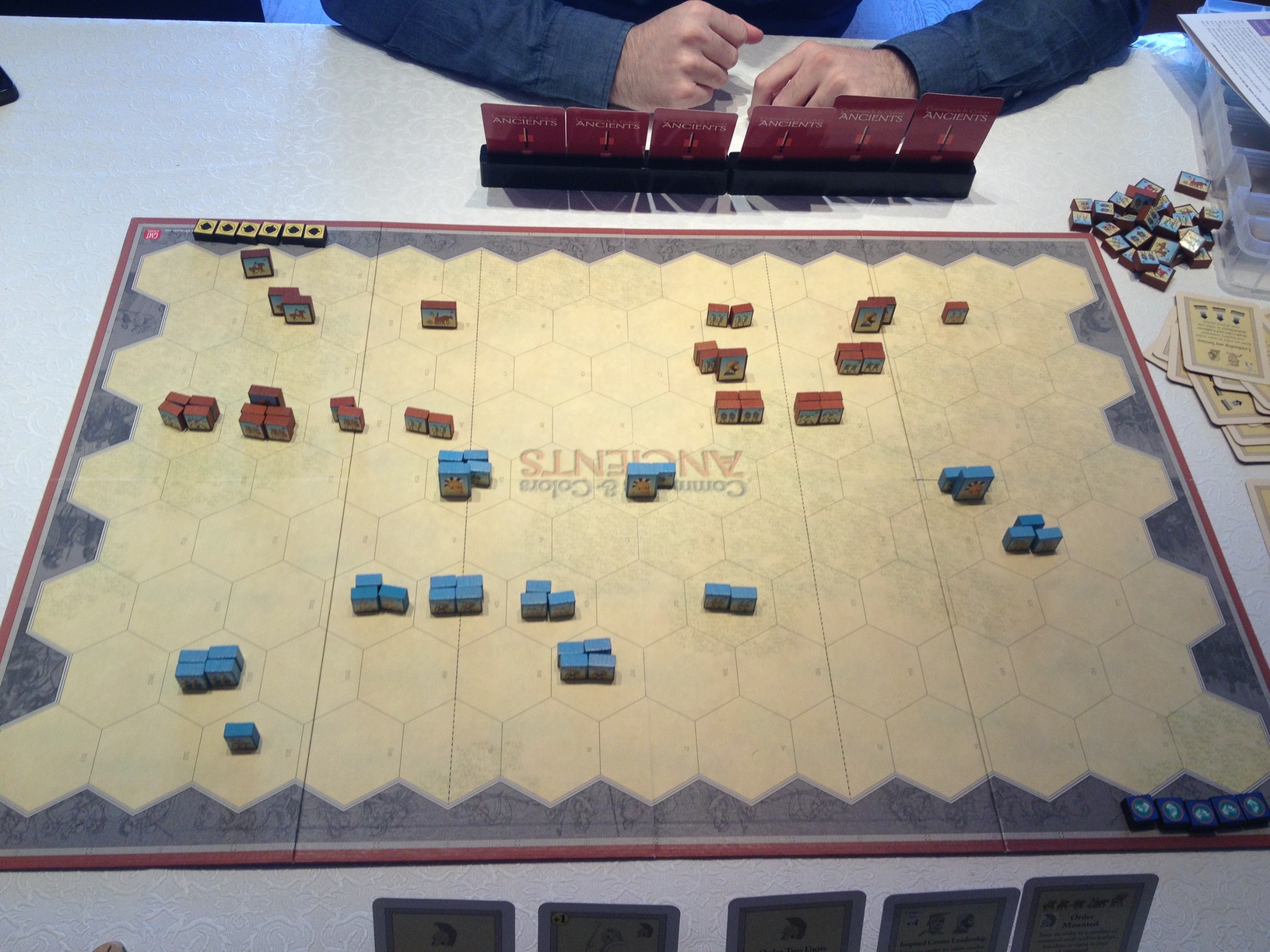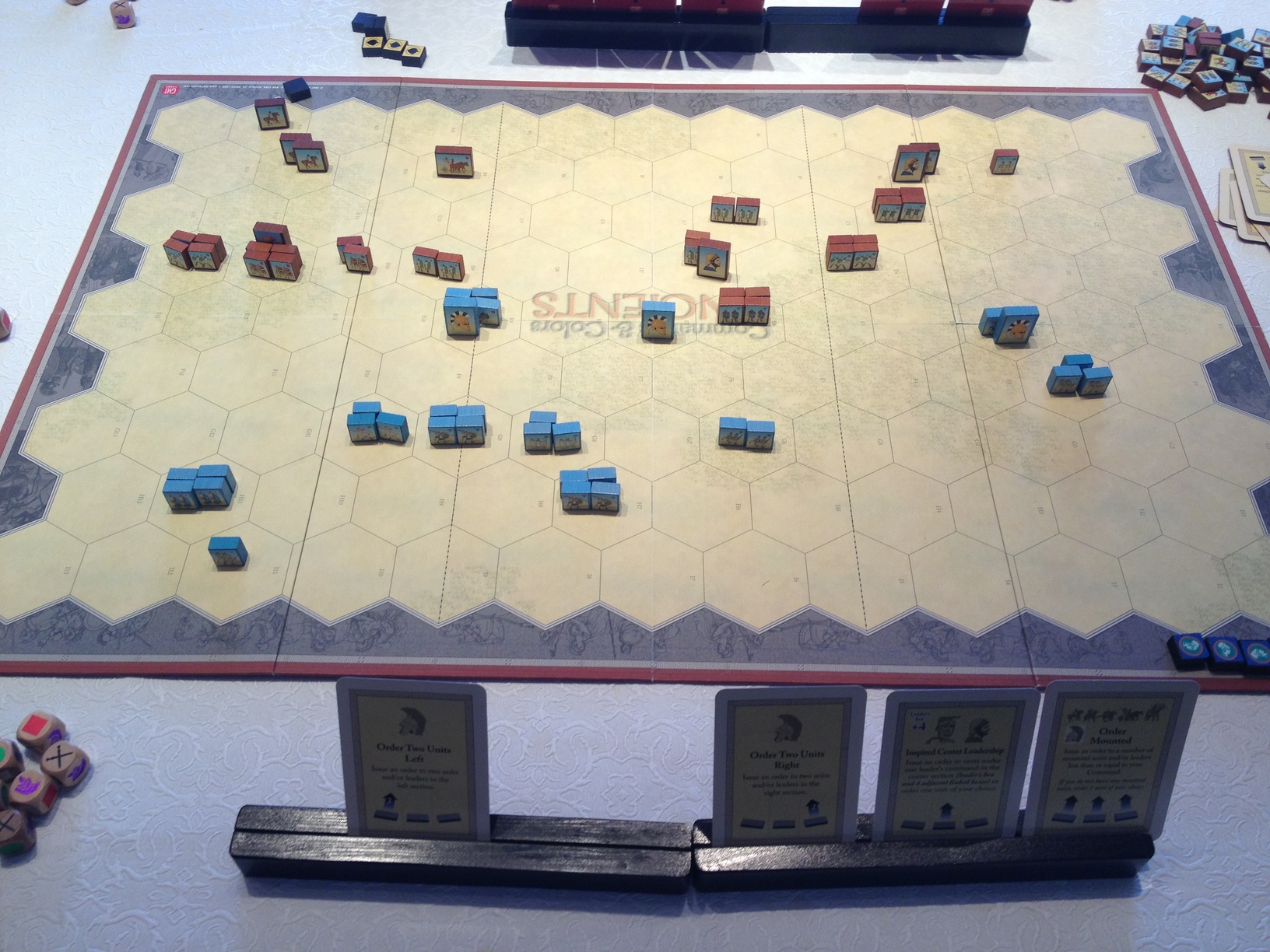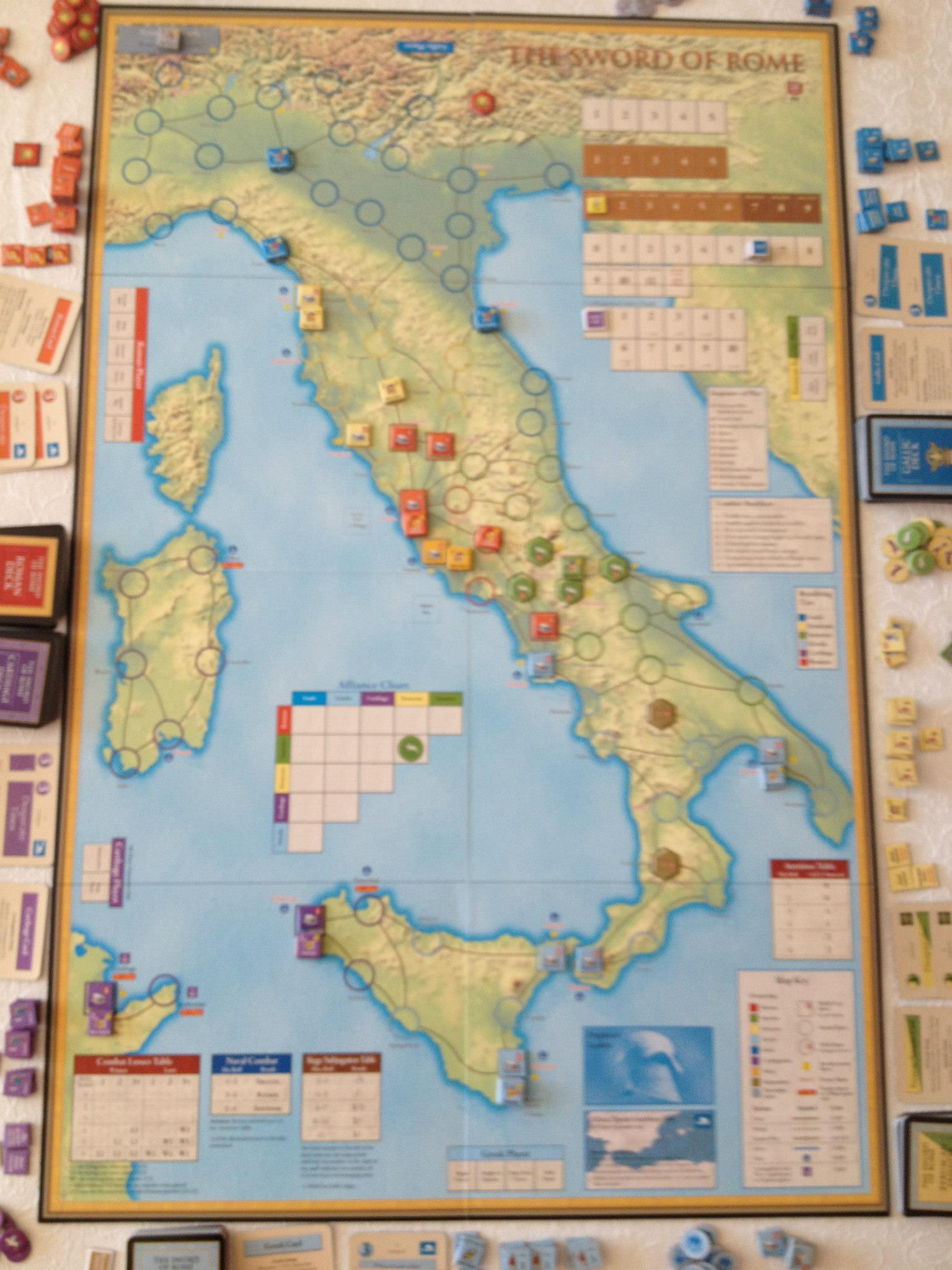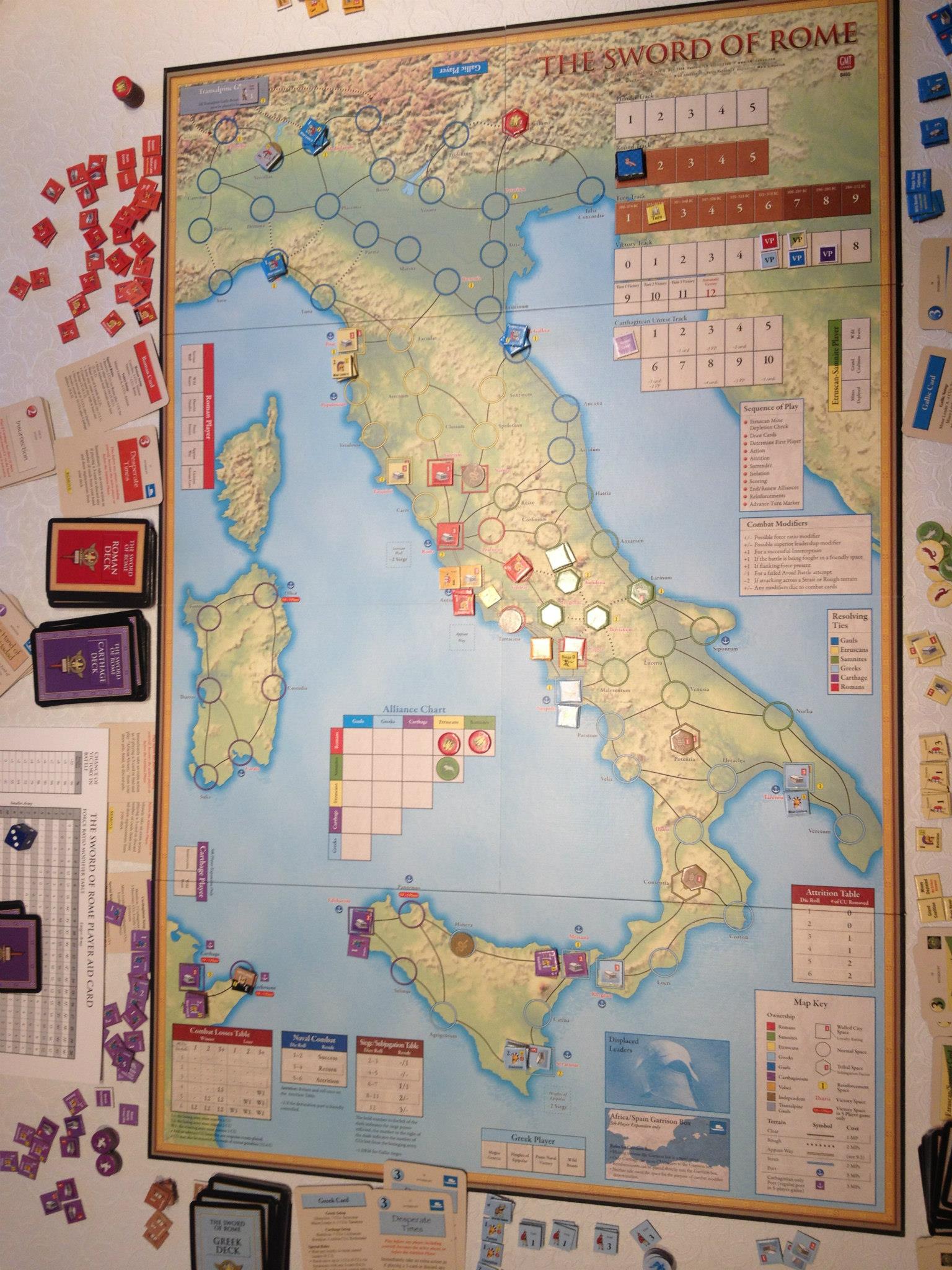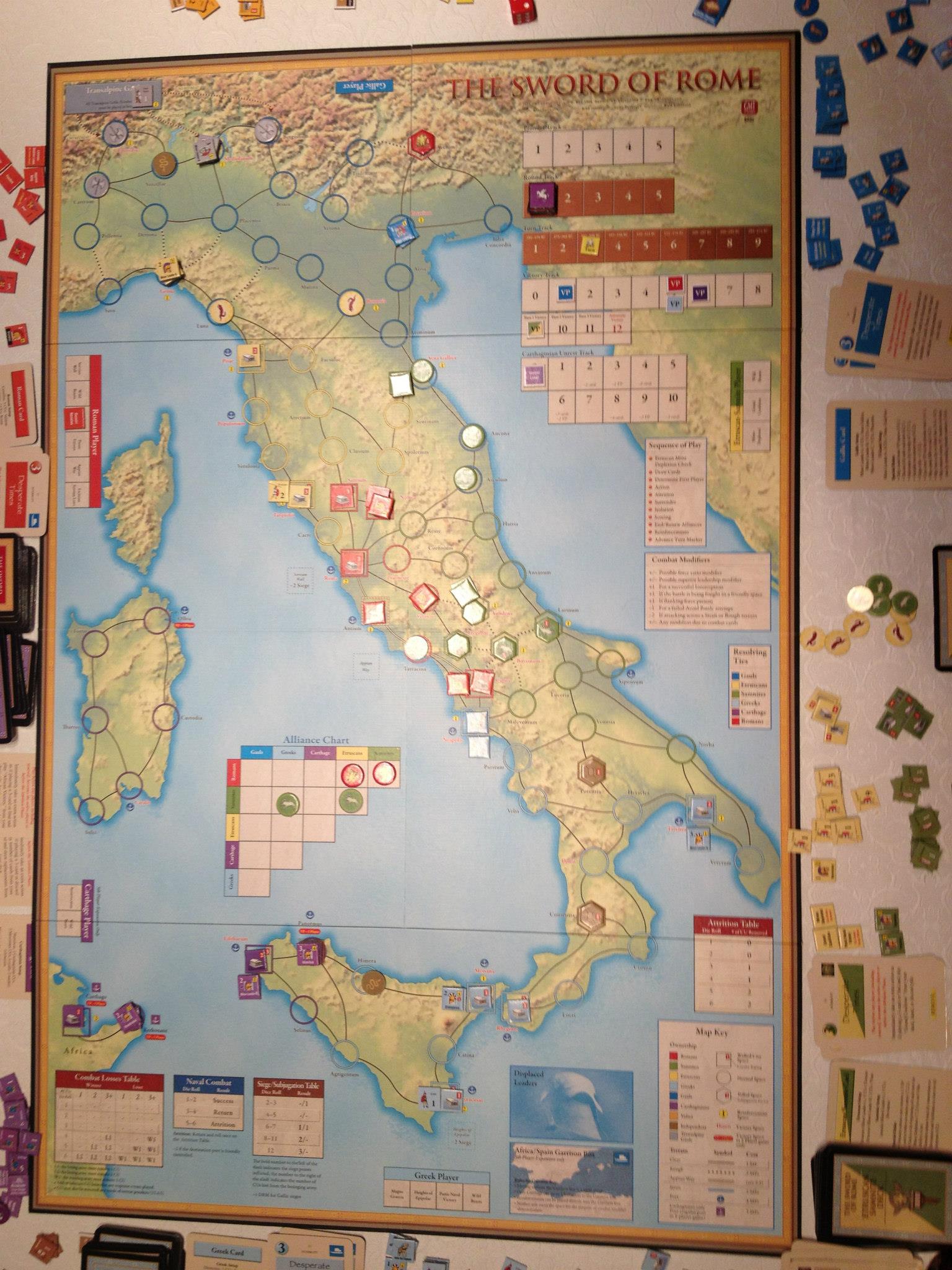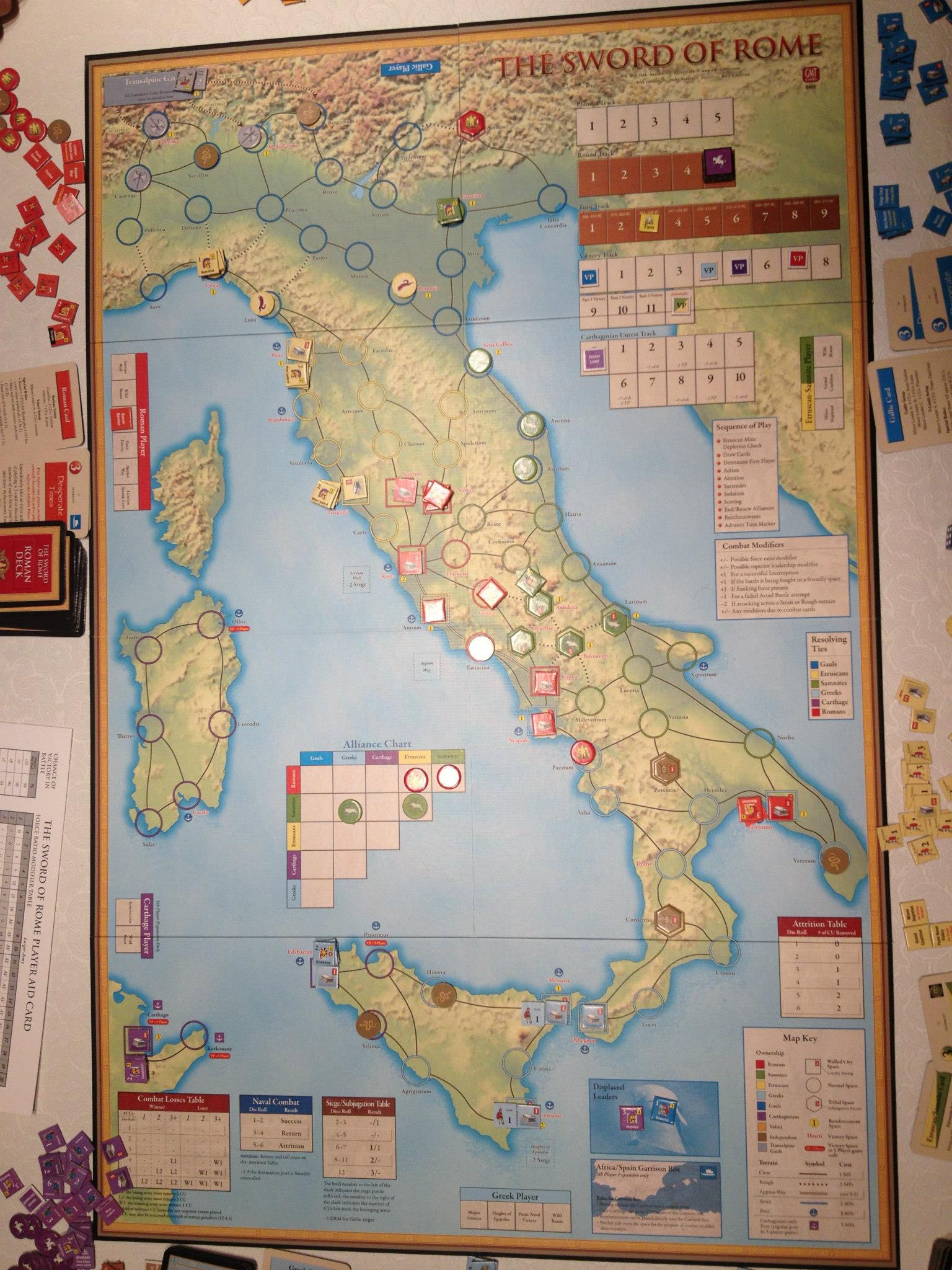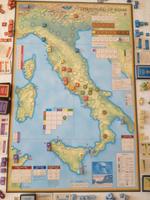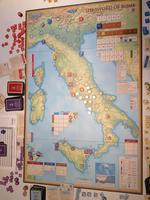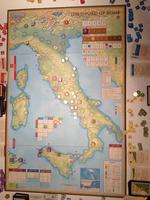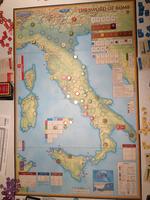Mount Vesuvius 73 BC (C&C Ancients)
 Friday, November 29, 2013 at 11:22AM
Friday, November 29, 2013 at 11:22AM Historical Background: The greatest slave revolt against Rome was led by a gladiator named Spartacus. He was a Thracian slave, trained as a gladiator by his owner, Lentulus Batiatus, at a gladiatorial school near Capua. Spartacus escaped from the school with 78 fellow gladiators. After some successful skirmishes with local guards, his force set about raiding the countryside, freeing more slaves to join their ranks. Spartacus set up a base on the defensible slopes of Mount Vesuvius. Remembering the earlier Slave Wars in Sicily, the Senate in Rome took this outbreak seriously. They dispatched Praetors Claudius Glaber and Publius Varinius with 3,000 men to suppress the uprising. Glaber and Varinius blockaded Spartacus at his base on Mount Vesuvius, intending to starve out the slaves since their camp was only accessible by a narrow and difficult passage. The wily Spartacus did not intend to be starved into submission, so he devised a daring plan. He ordered ladders to be made from the vines that grew on Vesuvius. Spartacus and most of his followers quietly descended the vine ladders, undetected by the Romans. Soon, a picked force of the slaves rushed the Roman camp from the mountain. Once the Romans were fully occupied by this attack, Spartacus and his force struck unexpectedly. Attacked from both sides, the Roman camp fell in short order. This victory over regular Roman forces allowed Spartacus to expand his operations and recruit a massive slave army.
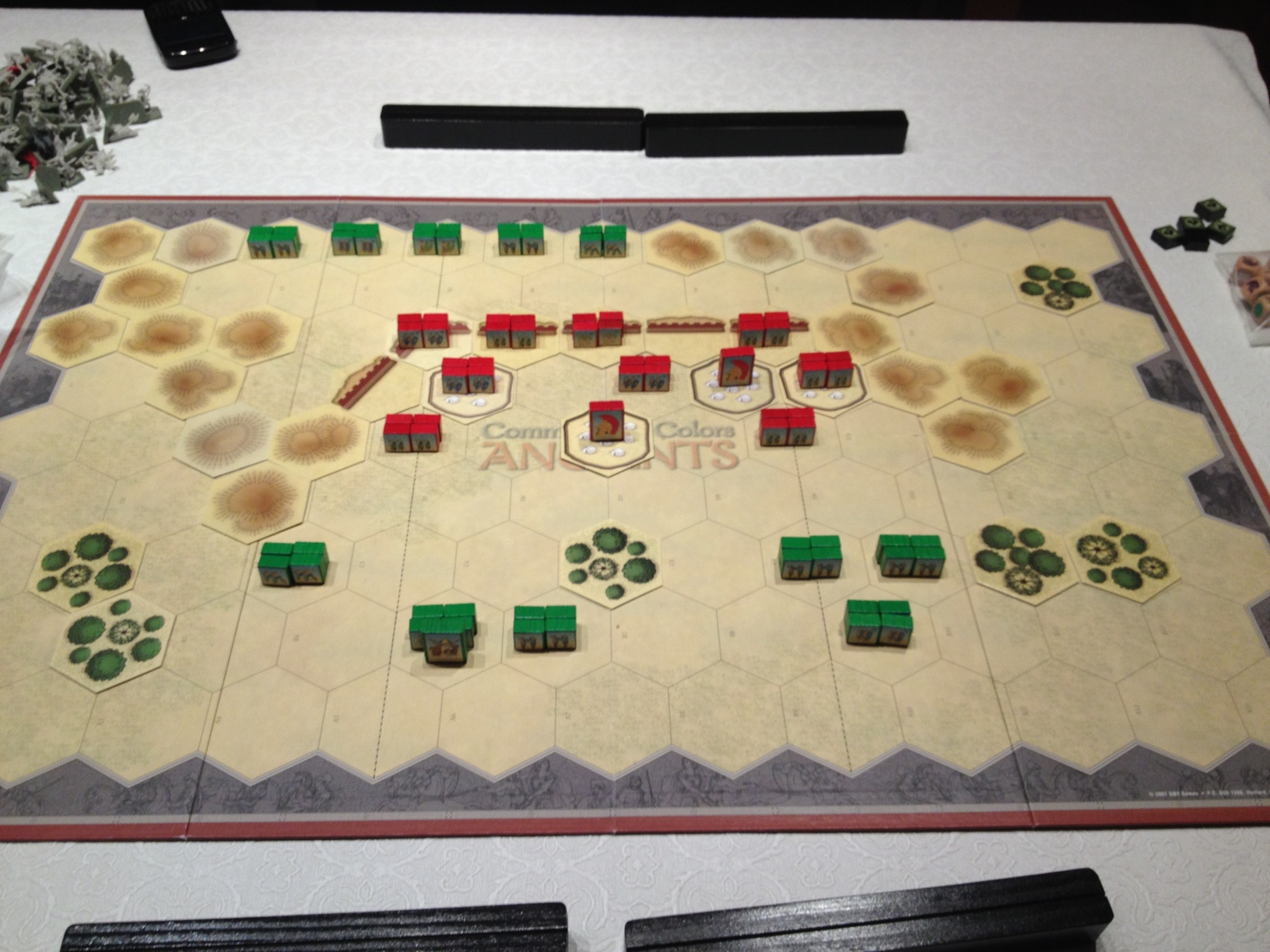
Spartacus sends some warriors after Varinius alone in the middle of the camp, but he eludes them long enough for his troops to mount a defense in the rear. Meanwhile, Spartacus troops to the North crash unsuccessfully on the walls of the camp. (Spartacus 0, Romans 1)
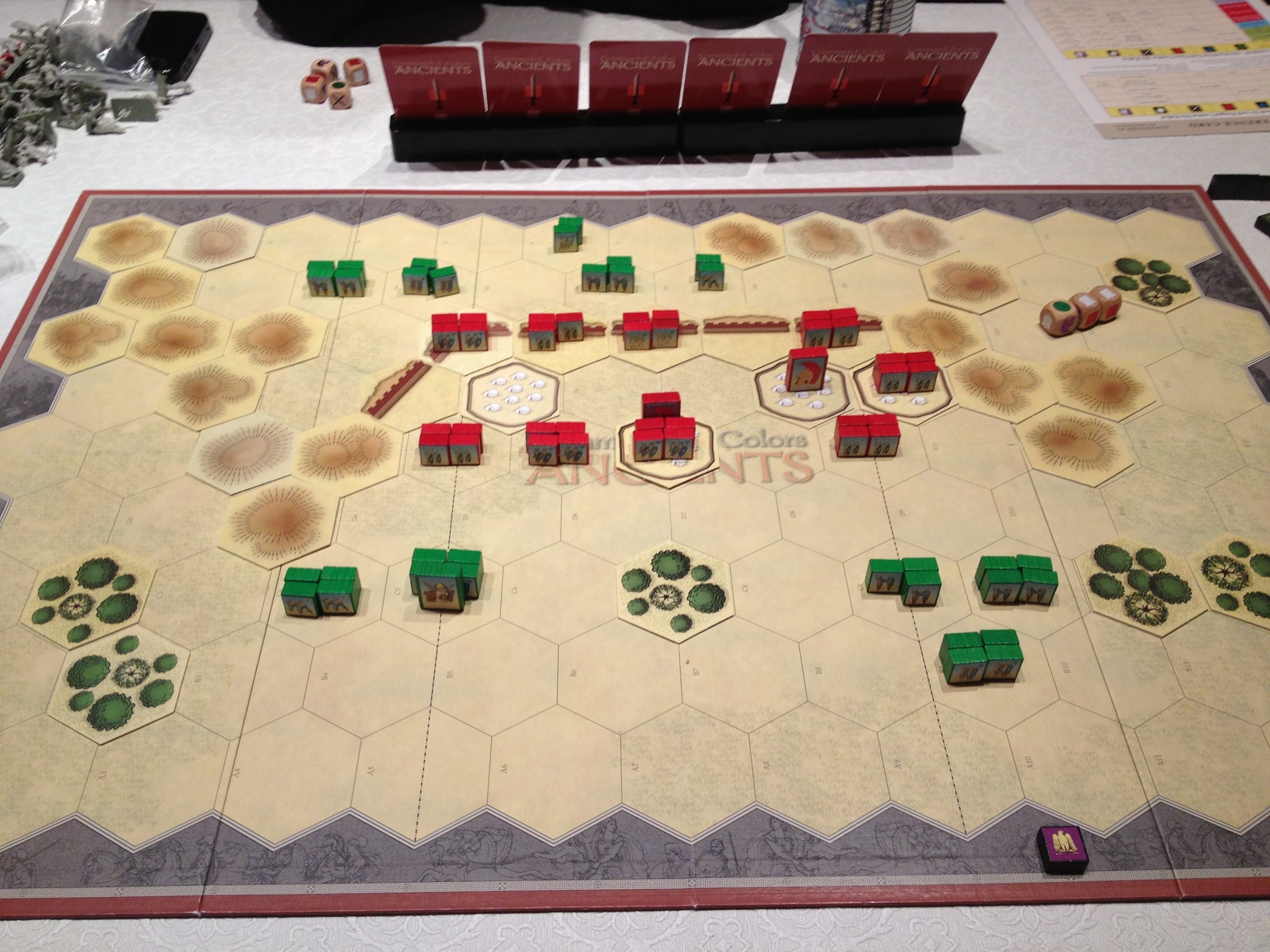
A force of Spartacus' warriors managed to breach the walls and burn part of the camp, but are repelled at some cost to the Romans. (Spartacus 2, Romans 3)
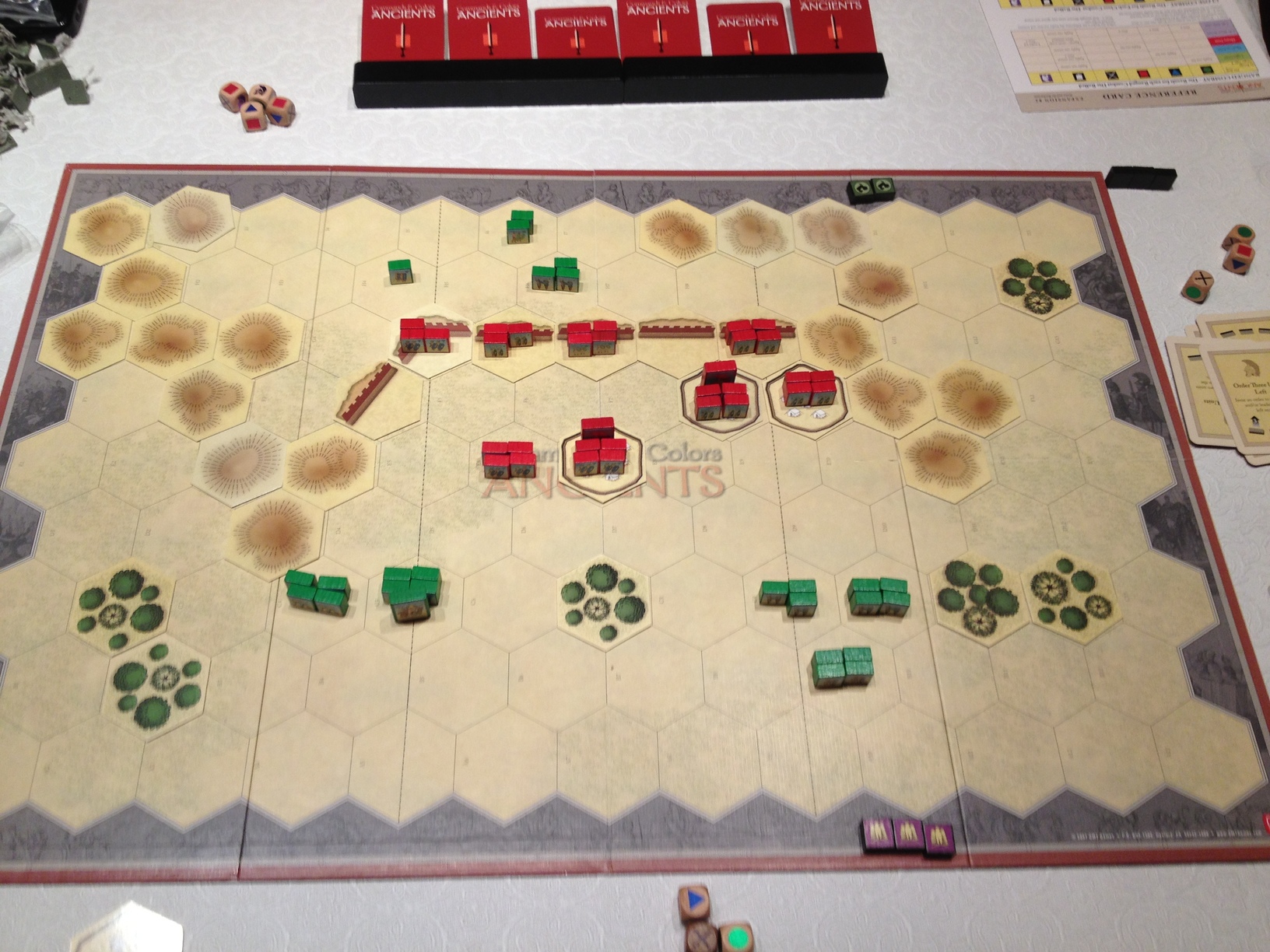
Spartacus then attempts another push from the south, but once more the Romans stand firmly their ground and the attackers are nearly wiped out with minor casualties on the Roman side. (Spartacus 2, Romans 4)
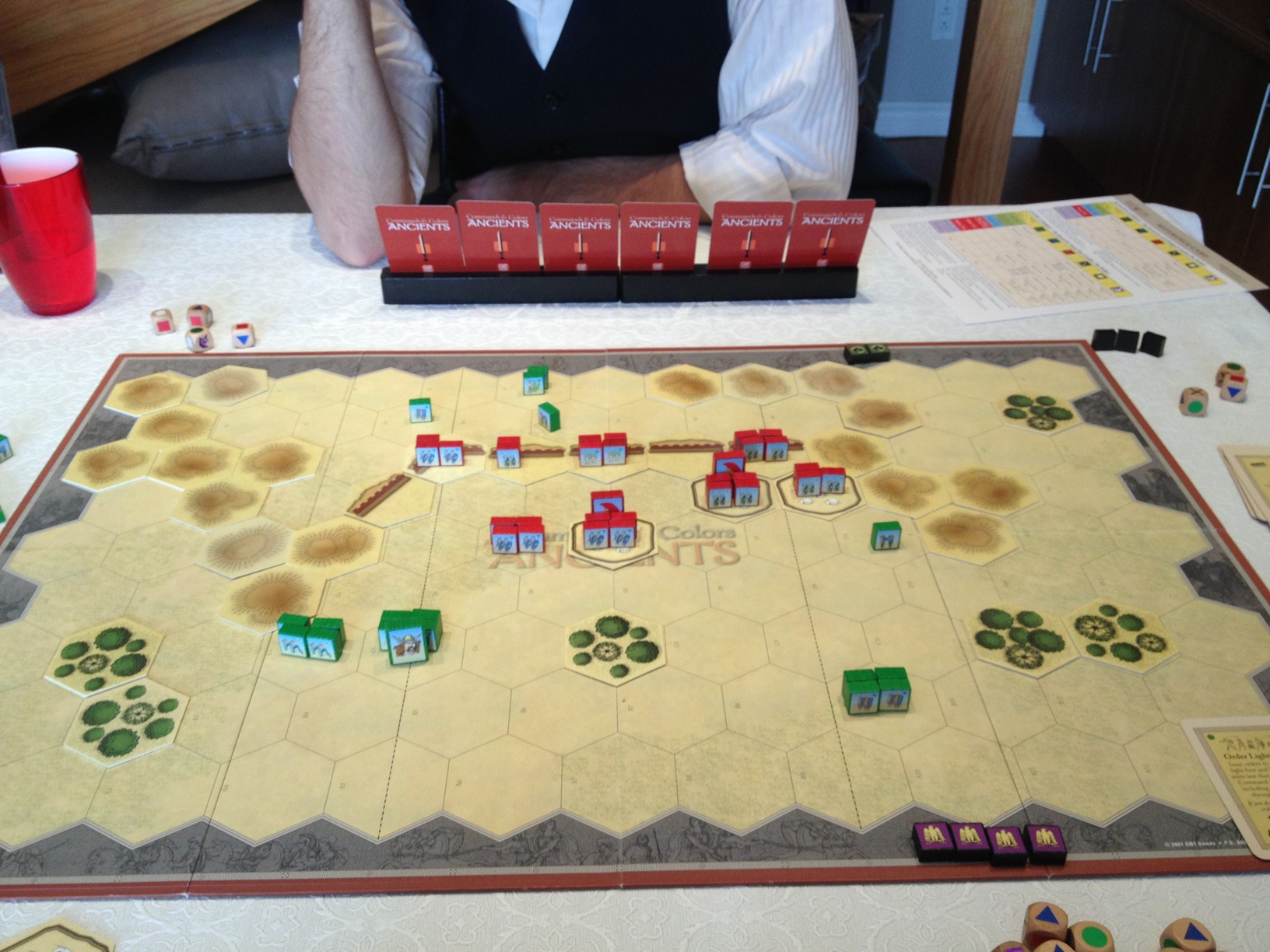
Desperate, Spartacus charges back into the fray with some of his best men, but he is cut down by Roman legionaries in the fighting. With this Roman victory, his forces scatter. (Spartacus 2, Romans 5)
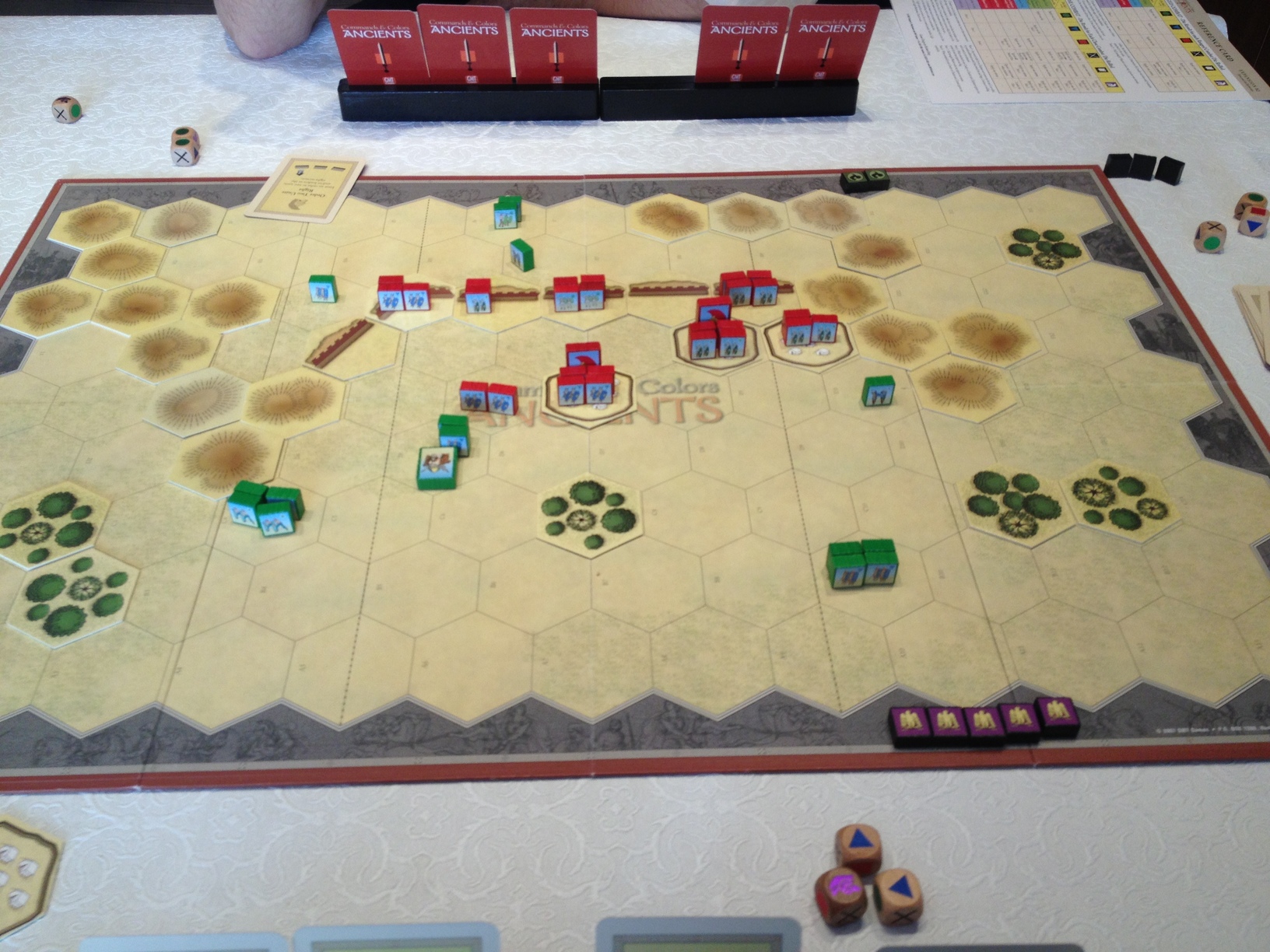
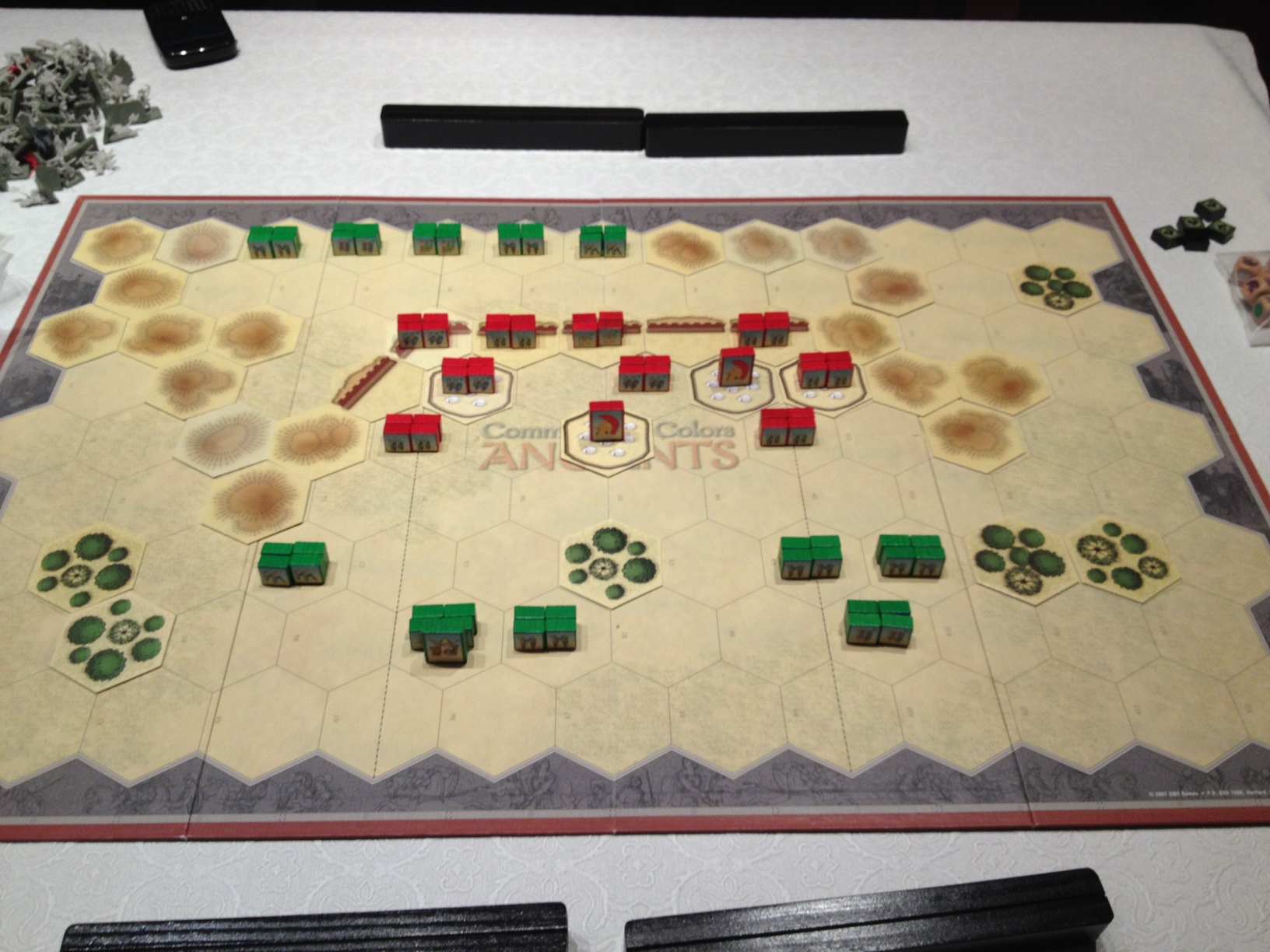
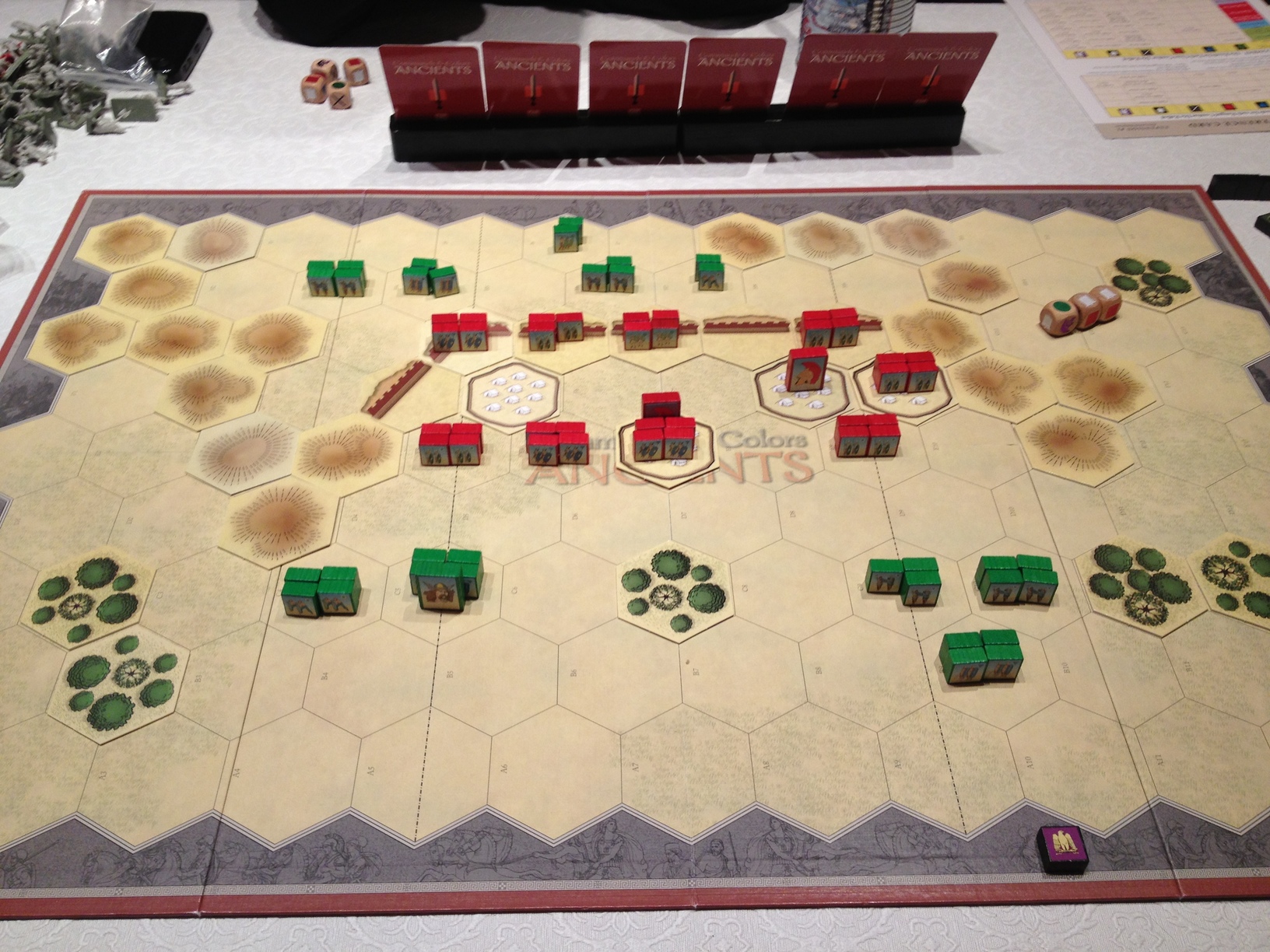
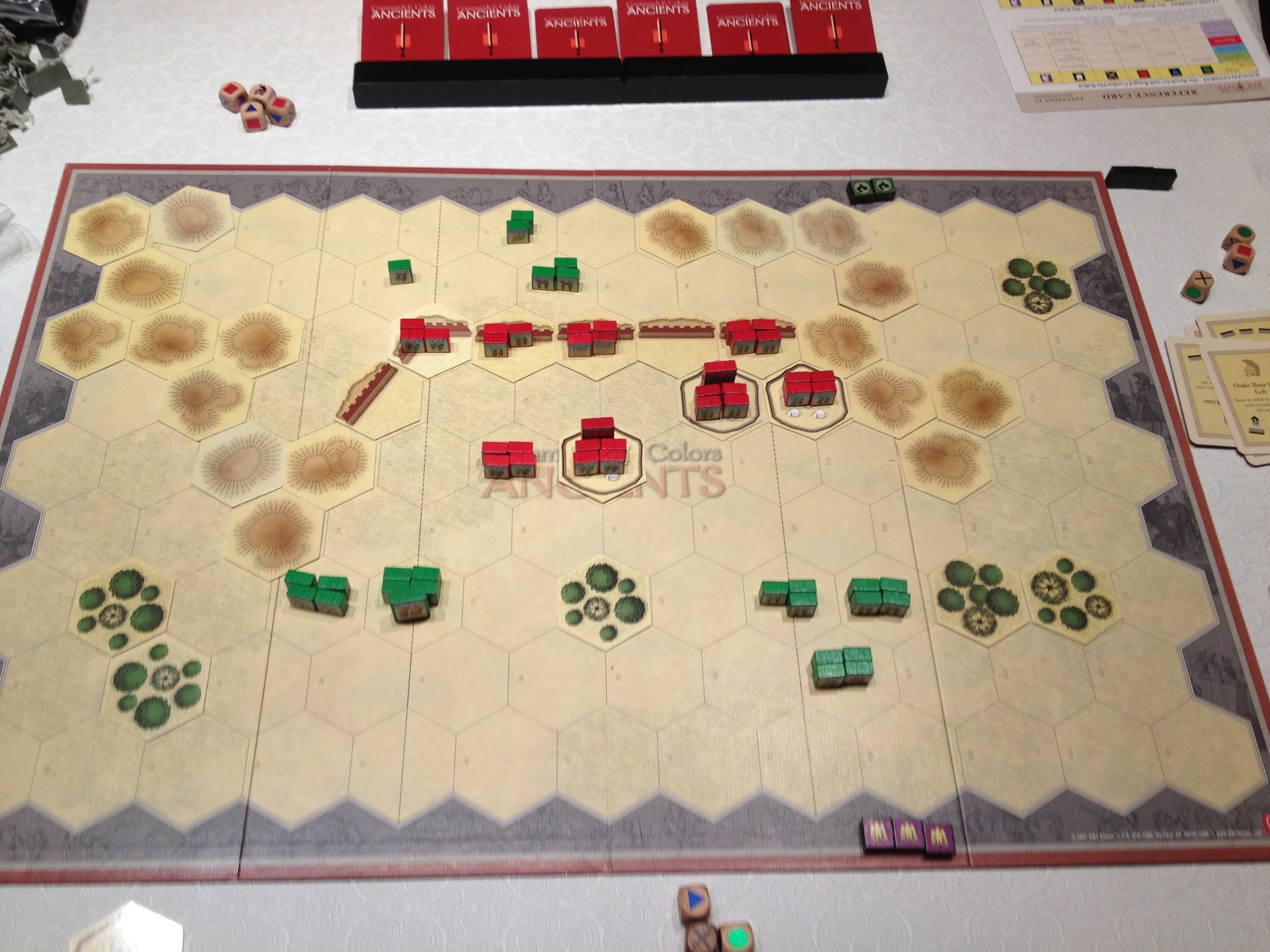
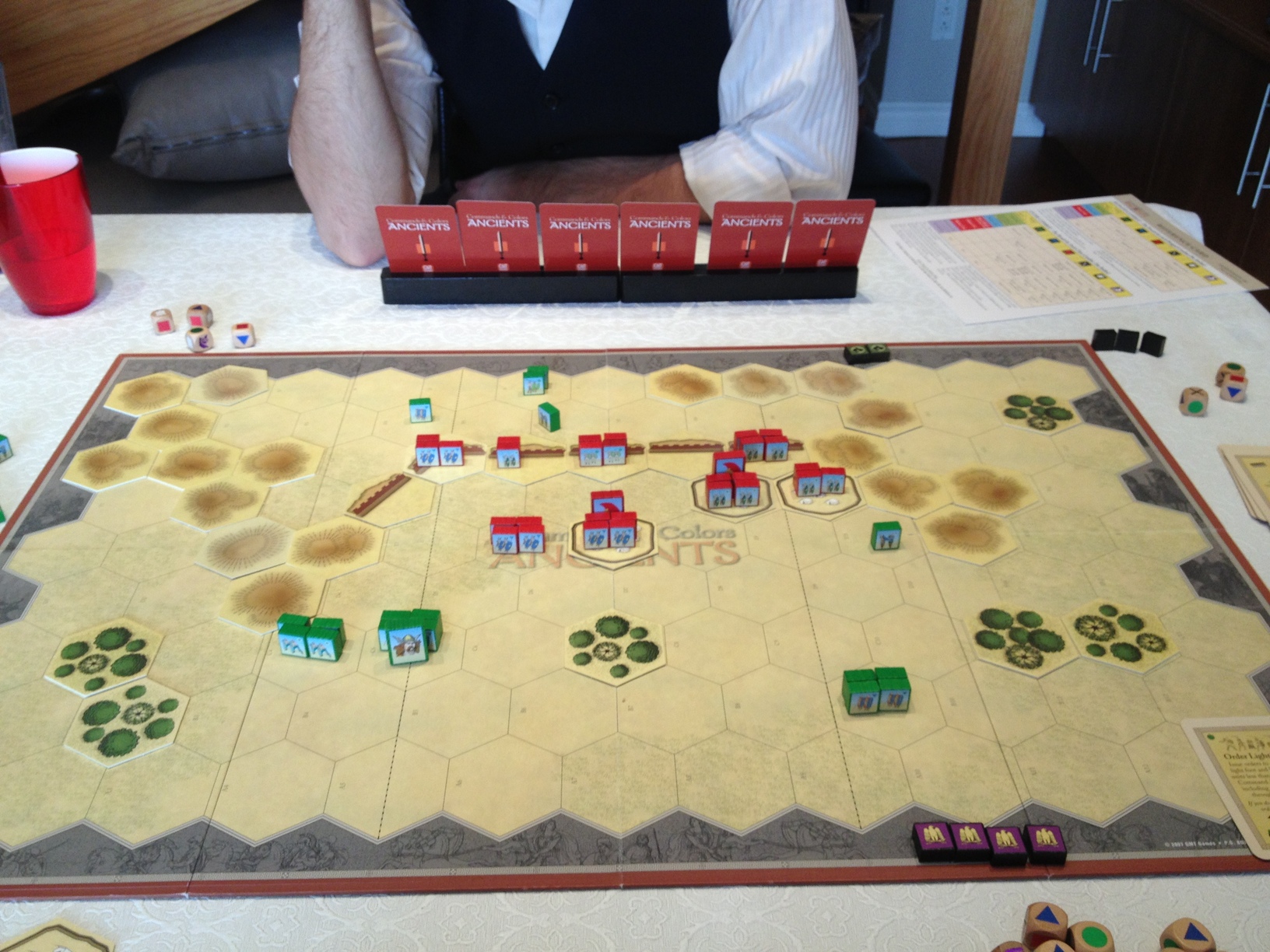
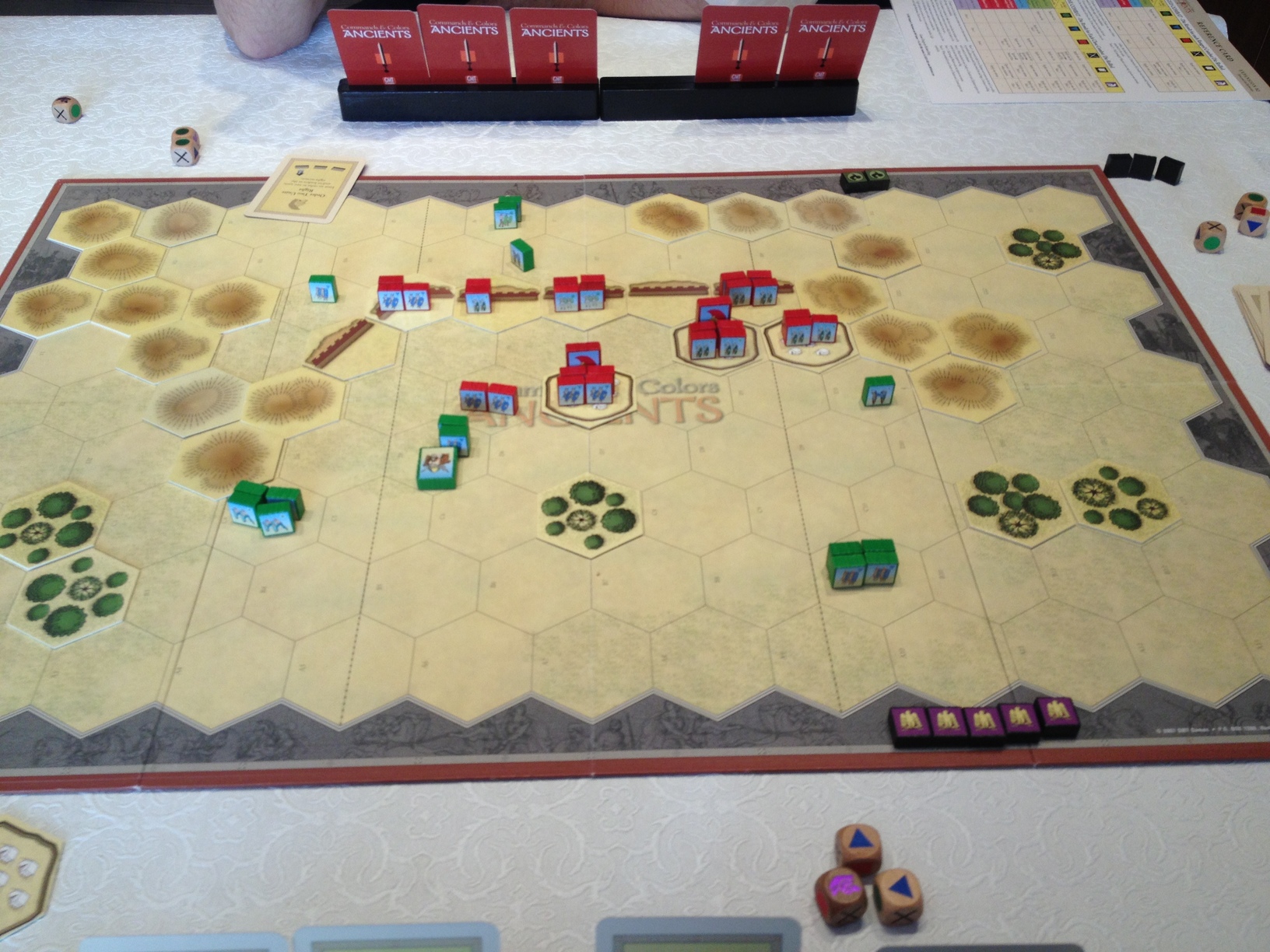
 Flax |
Flax |  Post a Comment |
Post a Comment | 
